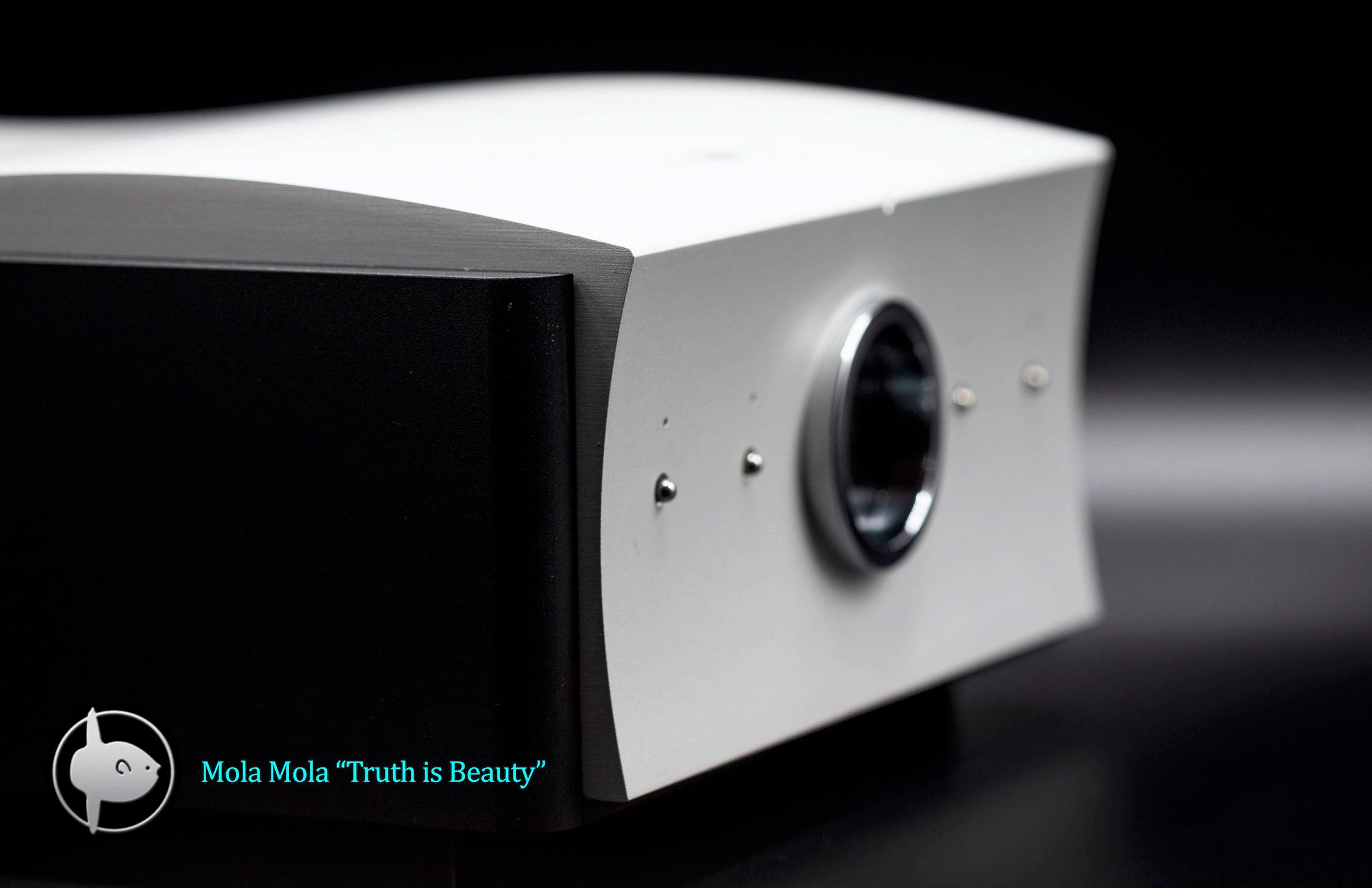

























































































First,it has been a great year! At over 18 million views to date with the promise of well over 20 million views for 2022, we have greatly exceeded our projections and expectations! A big thank you to all of our viewers, readers, and subscribers. That said, there is a great deal happening across this Best of the Year November 2022 issue of the AudioKeyREVIEWS! Magazine. Product selections, alone, for Best of the Year has been, without a doubt, the most difficult process of all. There were far too many exceptional products across all the relevant categories and this finds our Best of the Year section at over 100 picture-laden pages, writeups, and links to complete reviews. I don’t believe that there’s anything quite like it, as far as digital magazines go.
We also welcome via Analog Audio of Minnesota a host of articles penned by Roy Gregory, across a number of music-related topics. This is our ‘Future Past’ column as these historical articles will now found their way, one by one, to our digital magazine. The first of these articles is the best movie soundtracks produced in Mr. Gregory’s Future Past opinion.
Kermit E. HeartsongAnd, as usual, there is the art which may well double the engagement of those for whom art provides a welcomed and beautiful aesthetic to engage our audio reviews, music reviews, columns, and, in this issue, those best products, in our opinion.

I’d like to thank our reviewers, columnist, contributors, and our editors for the tireless and dedicated work over the course of this past year.










 Ansel Adams
Ansel Adams




 By K. E. Heartsong
By K. E. Heartsong
Once more into the breach or in this case into the world wherein electrostatics live, make music, entertain, and, dare I say, win converts continually. I’ve been traveling to this electrostatic world now for nearly three years and I am regularly astounded, surprised, jubilant to discover the diversity, talents, in short, the collective wherewithal of the various inhabitants—electrostatic headphones and
truth, they are a little bit standoffish, as they engage one from, literally, several feet away.
electrostatic headphone amplifiers— of this world.


I have known electrostatic speakers for some time and have been quite taken with their abilities to reproduce music, but for some reason I have not spent much time with them. They are certainly part of the electrostatic world, but different, and their continent lies far flung, is sparsely populated and fairly difficult to gain admission to. Also, they are not as, well, personable as this world’s other offerings. In
On this particular journey I travel to Trilogy where I engage the Trilogy H1 electrostatic energizer with a couple of old friends —STAX SR-009S and the Dan Clark VOCE. We, of course, wait patiently for the STAX SR-X9000 to return. There is one thing that I must again mention and that is that the combination of electrostatic headphone and headphone amplifier can become a sort of time machine. “A time machine” you ask? Yes, for their preternatural ability to transport one to the time, space or venue of a given recorded performance, an ability which is truly uncanny and quite glorious. As I had mentioned in an earlier review: “Yes, equipped with a good to great electrostatic headphone, a good to great electrostatic ‘energizer’/ headphone amplifier, and a comfortable chair, you are off across time and space discovering a plethora of musical venues—recording studios, stadium concerts, jazz cafes, symphonies, small classical quartets, etc—as if you were seated in them.”
So you ask, “How is the Trilogy electrostatic country different from the others? How is it alike? What is its landscape? Is it a place that you might be able to call home?”
REFRAIN: Unlike most reviews, this review will be non-sequential, as it will start with how the component actually sounds and not the


 Claude Monet - Women in the Garden, 1866
Claude Monet - Women in the Garden, 1866



process of physically “undressing” it and/or laying out its various parts, specifications, etc.
Think of this review then, as a non-linear movie—Memento, Kill Bill, Arrival, Eternal Sunshine of the Spotless Mind, etc.—that, likewise, starts at the end and winds its way to the beginning.
At times when listening, I’d imagine singleended triode or, perhaps, analog of the master tape variety as wed to electrostatics. The listening experience was always unique and compelling. And I have listened to a great many electrostatic headphone amplifiers from the Viva Egoista STX ($17,000) to the Blue
(energizer)—and the ease and beauty and profound musicality of a single-ended triode amplifier. If you can work that out in your mind—the tacit, intermingling dualities, the incongruities, the profoundly seductive engagement on offer, then you will have some idea of the Trilogy H1 Energizer and its country. Perhaps you won’t be prepared for it. I wasn’t. What did I know of Trilogy, prior to visiting? Nothing.

quite good to exceptional.
The Trilogy H1 was different again. It was every bit as commanding and musical, natural and prodigiously detailed, but, perhaps, even more gripping, more inherently musical than its brethren. It was as though the music simply took you over.
The Trilogy H1, however, did not offer the incredible clarity of the Viva Egoista STX or its openness, but it was closer in quality than one



would have expected, and at a fraction of the cost. The BHSE went more deeply and easily into the sub-bass region and was incredibly musical but then it does employ a pentode (BHSE) versus triode (H1). However, other electrostatic amps, all exceptionally detailed,

engagement with each piece. ‘Sublimemomentary-catatonia’ gave way to ‘Sublimelong-term-catatonic-shock’ wherein disbelief was constantly suspended, for long bouts. Was it the six triode tubes (4 × 6C3PI, 2 × 6H6PI)? Most probably. Suffice to say that tone and
coherent, and musical, did not command so expertly the musical ‘traits’ of the Trilogy H1. At one point, I found myself rising to change the record! There was, of course, no record. Amazing!
All the usual suspects were lined up for the Trilogy H1’s examination and one after the other there was, well, more musical
timbre are natural, beautiful, rich, edible.
The Trilogy H1’s volumetric cube—its soundstage—is exceptional. Its ability to render depth and width is rivaled only by the Viva Egoista STX and equaled by the BHSE. Its ‘layout’—layering, placement, separation— of performers on a stage is exacting and solid. The Trilogy H1 reveals space via endless


 Henri-Matisse - Sárga-és-kék-enteriőr
Henri-Matisse - Sárga-és-kék-enteriőr
microdynamic details, nuance, and spatial cues which made venues real and believable, in a continual ‘you-are-there’ manner.

ready to join the mix. What can I say? When an album is so familiar to you and helps to provide insight on treble resolution, transient
cables/wires and RSX power cords handled their respective duties. The Audience AdeptResponse aRS-T4 provided service as the power conditioner.
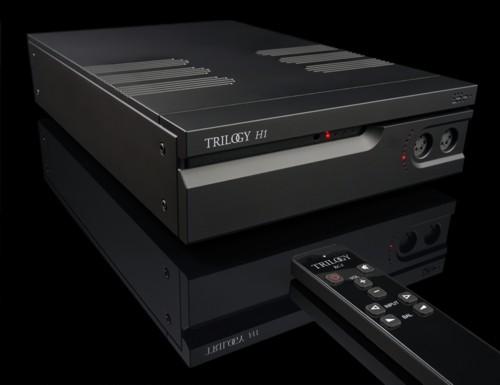

TREBLE Spaciousness. Ease. Finesse. Resolution. Musicality. Air. Dave Brubeck’s “Take Five” (Time Out, Columbia-Legacy, CD) sits
regard to the drum kit and its cymbals and their master-tape-like high-fidelity. Does it get any better? Yes, it would if the STAX SRX9000 headphones were in the house, though the STAX SR-009S is also no slouch, despite having relinquished its top position. Hilary Hahn’s “V. Chaconne from Partita No. 2 for Violin in D minor, BWV 1004” (The Essential Hilary, Sony Classical) comes alive, while the

venue and the air within the space have never been more present, more participatory. And the tone and timbre of Hilary’s violin are natural, rich, attention grabbing in their verisimilitude via the Trilogy H1, like never before. Where the Viva Egoista STX brought change the record” when, again, there is no record to change.
MIDRANGE Spacious. Natural. Analog. Unendingly detailed. Musical. There is an ease that permeates the Trilogy H1’s rendering of music. Perhaps it is extreme confidence in its abilities, a ready ease with all manner of recordings, or
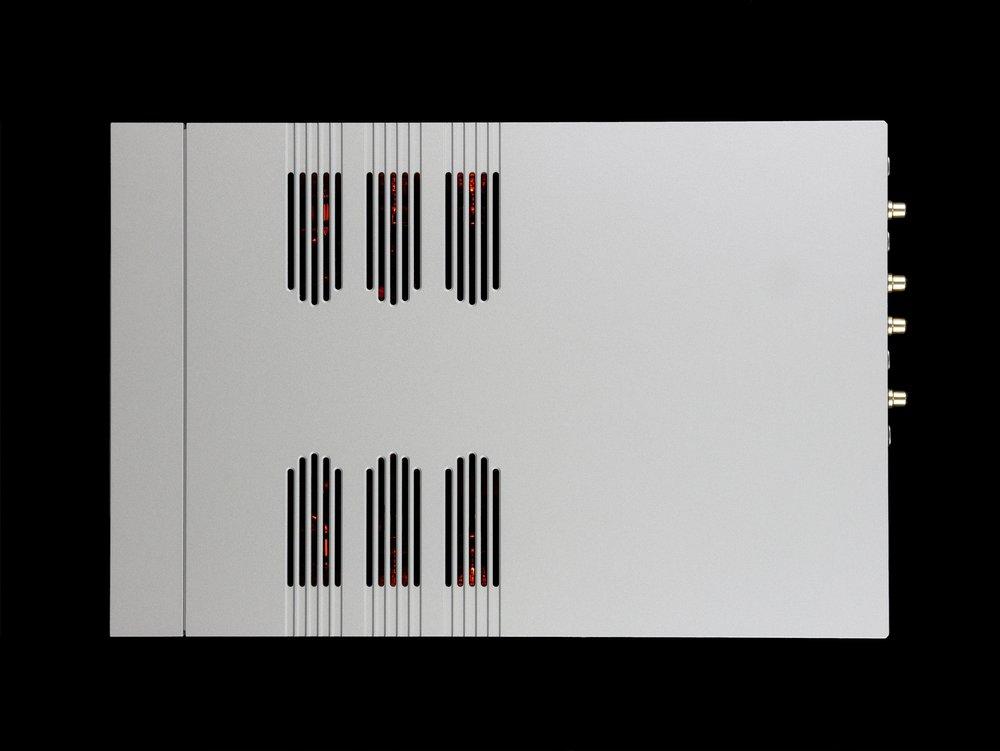

perhaps it is just its nature. As most probably know, electrostatics, in general, have no peer when it comes to the playback of live events, choirs, large reverberant, air-filled venues, etc. This fact has kept me at a distance from these types of recordings when not using ‘electrostatics’, with two exceptions—playback

Suffice to say that choral music and, in particular, Voces8, a UK based choral group, were back on the menu. I happily queued up “Agnus Dei” (Enchanted Isle, Decca) for play. Ethereal, the soprano’s voice soars, the massed voices, tonally captivating, accompany beautifully, and St. George’s Church,

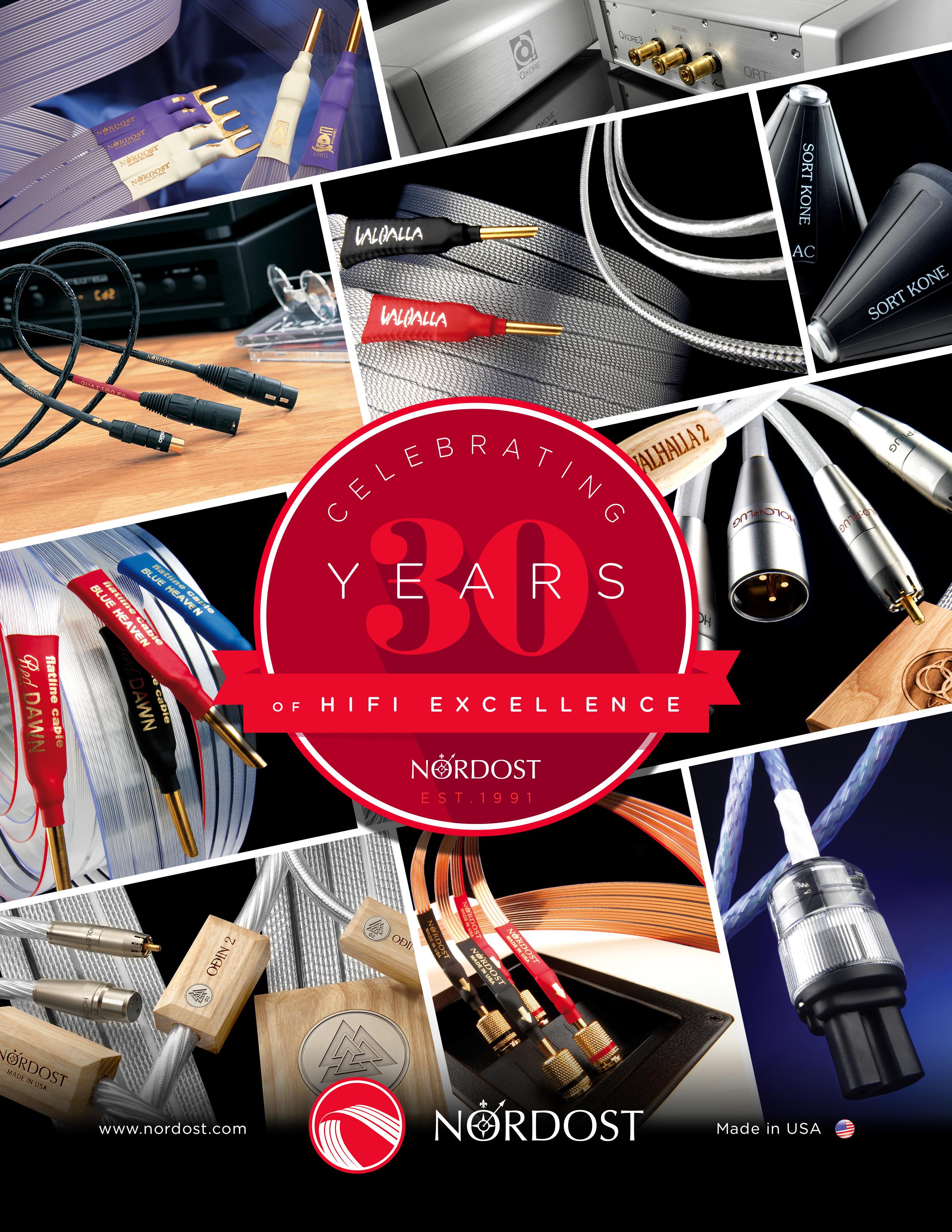
Chesterton, Cambridge, England lends its volume and air as canvas to their voices. The Trilogy H1 excels in this reproduction and in all the other pieces across this album. Sublime.
torturous track. First, it was produced/ recorded quite low or so it seems. You’ll need to adjust the volume 6, 7, 8 possibly 9 steps higher, depending on the amplifier, to arrive at



was inevitable, the pious and the not so pious in a rather dramatic counterpoint. “My Home in the Delta” opens and it is a time-machine transportation to the venue, to witness Muddy and company in the throes of singing the blues. “Hot dog” it is more ‘real’ than it has ever been.
BASS Tight. Energetic. Blistering dynamics. Daunting musicality. Eiji Oui’s “Infernal Dance of King Kashchey” (Stravinsky, Reference Recording) is queued for play and opens with…well, a not so steep dive into the subbass strata, though the upper bass and mid bass regions are handled beautifully. There is a reason that I select this piece for bass and subbass evaluation and that is because it can be a
loudness. This is where a steep sub-bass dive is absolutely necessary. And while a good number of components achieve it, a good number do not. The Trilogy H1 handled all of the other usual bass suspects—Marcus Miller’s “Power” (M2, Concord), Massive Attack’s “Angel” (Mezzanine, Circa), David Holland’s “B-40/M23-6K/RS-W” (Emerald Tears, ECM), Malia and Boris Blank’s “Celestial Echo” (Convergence, Boutique)—beautifully. The Trilogy H1 could not, however, reach into the seven-tympani-strong sub-bass or deepbass strata for the “Infernal Dance of King Kashchey”. This is its limitation: it expertly handles the mid and upper bass, and even the initial steps of the deep bass regions remarkably well and beautifully, though not the deepest bass.

CONCLUSION
I have become very familiar with electrostatic headphones and amplifiers (energizers) as I have traveled to the electrostatic world quite often and happily so. Visiting it has vanquished the belief that musical beauty and technical prowess—resolution, transparency, detail retrieval, immaculate staging—had to be, more often than not, mutually exclusive. They are not, at least, not on this world. And I have also long known single-ended triodes across an array of vacuum tubes—300B, 845s, 2A3s, 211s, EL34s, etc—implemented across an array of amplifiers for their tonal/timbral beauty and richness. The ‘marriage’ of the two with sufficient power reserves to drive one’s headphones is sublime in the extreme. Though the ability to acquire the Holy-Bass-HeadGrail, at the limits of the sub-bass strata appears to be the Trilogy H1’s only limitation. And yes, I reversed the order of the frequency reviews, as a dedicated ‘dessert first’ issue, so as to outline its truly outstanding way with, well, everything else.
The Trilogy H1 energizer is the child of electrostatics and single-ended triodes and it is sublime in the extreme. Did I mention the Trilogy H1’s blazing, transient speed, its openness, its hypnotic immersiveness, and delicious tonality? “Yes.” Well, okay.
That this is a first outing for Trilogy in the electrostatic realm is remarkable and speaks to a well researched and developed first electrostatic product. That it is not more widely
known is only temporary, in this reviewer’s opinion.
I happily award—the GOLD KEYNOTE AWARD— to the Trilogy H1, an exceptional electrostatic headphone amplifier.

Pros: Transcendent ability to bring forth the music and the attendant parameters of high fidelity music reproduction in a most sublime manner. Incredibly delicious midrange, extended silky treble, potent upper and mid bass. Two (2) XLR inputs!
Cons: Sub-bass reach. –

THE COMPANY & DISTRIBUTOR TRILOGY AUDIO
Trilogy H1 Energizer HPA\E: $6,850 (USD) for Silver $7,250 (USD) Black www.trilogyaudio.com sales@trilogyaudio.com
HIGH FIDELITY SERVICE Paul Manos www.hifiservices.com paulm@hifiservices.com>

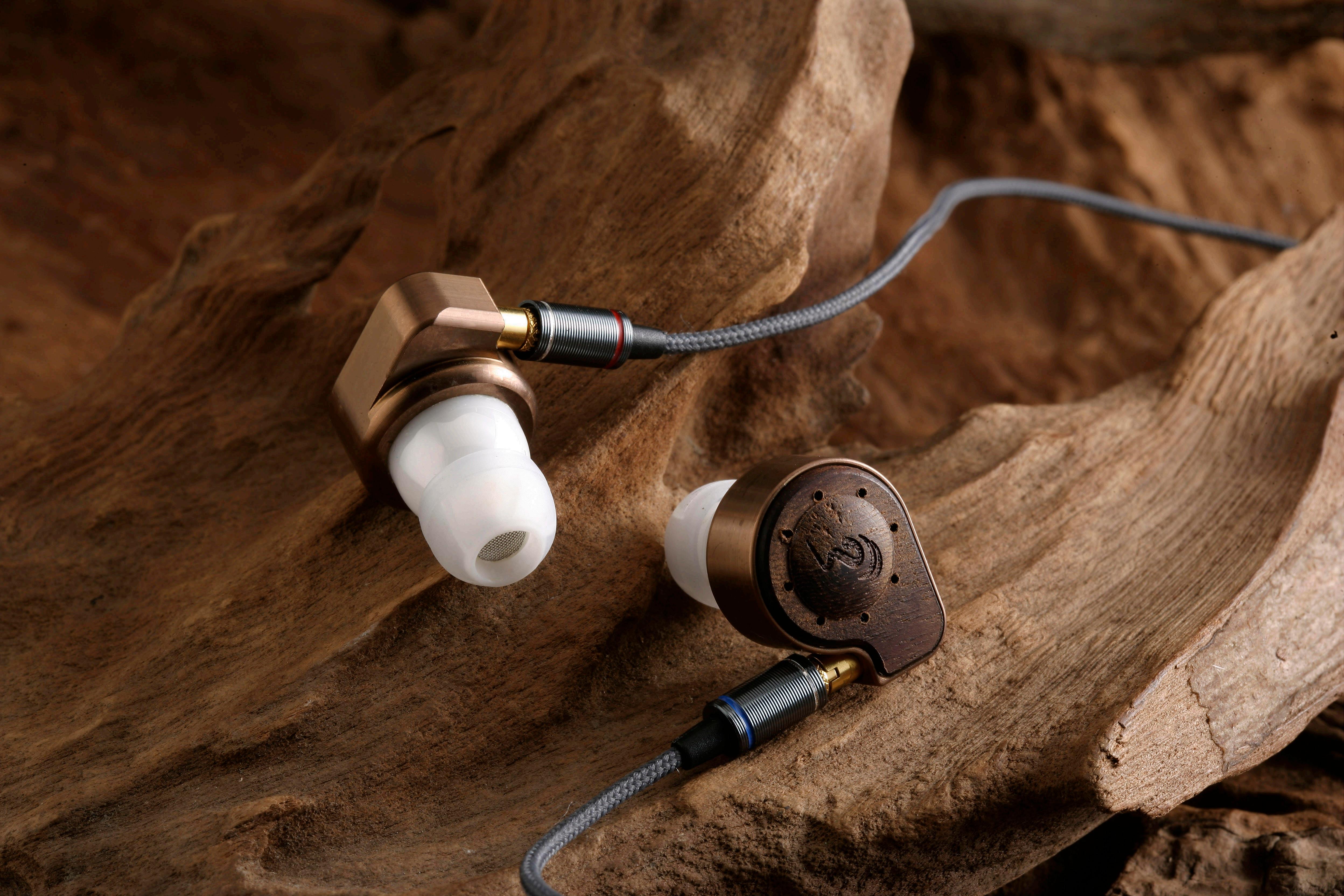

“The magic begins, however, when the RA-C-CU’s musicality shows up and saunters in all “analog-like” and brings the house down.”
—K.E. Heartsong, AudioKeyREVIEWS! Magazine



 By Andre Marc
By Andre Marc


SanFrancisco based Parasound has been making highly rated amplifiers and preamps for decades now, with many of their products being affordable to a wide range of enthusiasts. Their designs are often feature packed, and are all built to a


set of features. This is the second iteration of the Halo Integrated, with the original in circulation from 2014 to 2018.
Parasound took the opportunity to make numerous design and hardware improvements for the HINT 6, released in 2019. Some of the
high standard in Taiwan. The company offers warranties on all their products, and their reputation for customer support is excellent. Amplifiers are where Parasound made their name, with well known designer John Curl contributing circuit designs early on. Parasound kindly sent their Halo HINT 6 integrated amplifier in for review, and it is an attractively priced audio Swiss Army Knife, covering just about every base with its rich
modifications include a Burr-Brown, analog resistor ladder volume control (my preferred implementation), an updated USB receiver, additional digital inputs, an upgraded solid aluminum volume knob, and an updated internal phono preamp.
In addition they added some thoughtful improvements, like a dimmable display, volume settings that can be programmed as favorites, and cleaner cosmetics. Yes, a full-function


 Claude Monet - Red Water Lillies
Claude Monet - Red Water Lillies
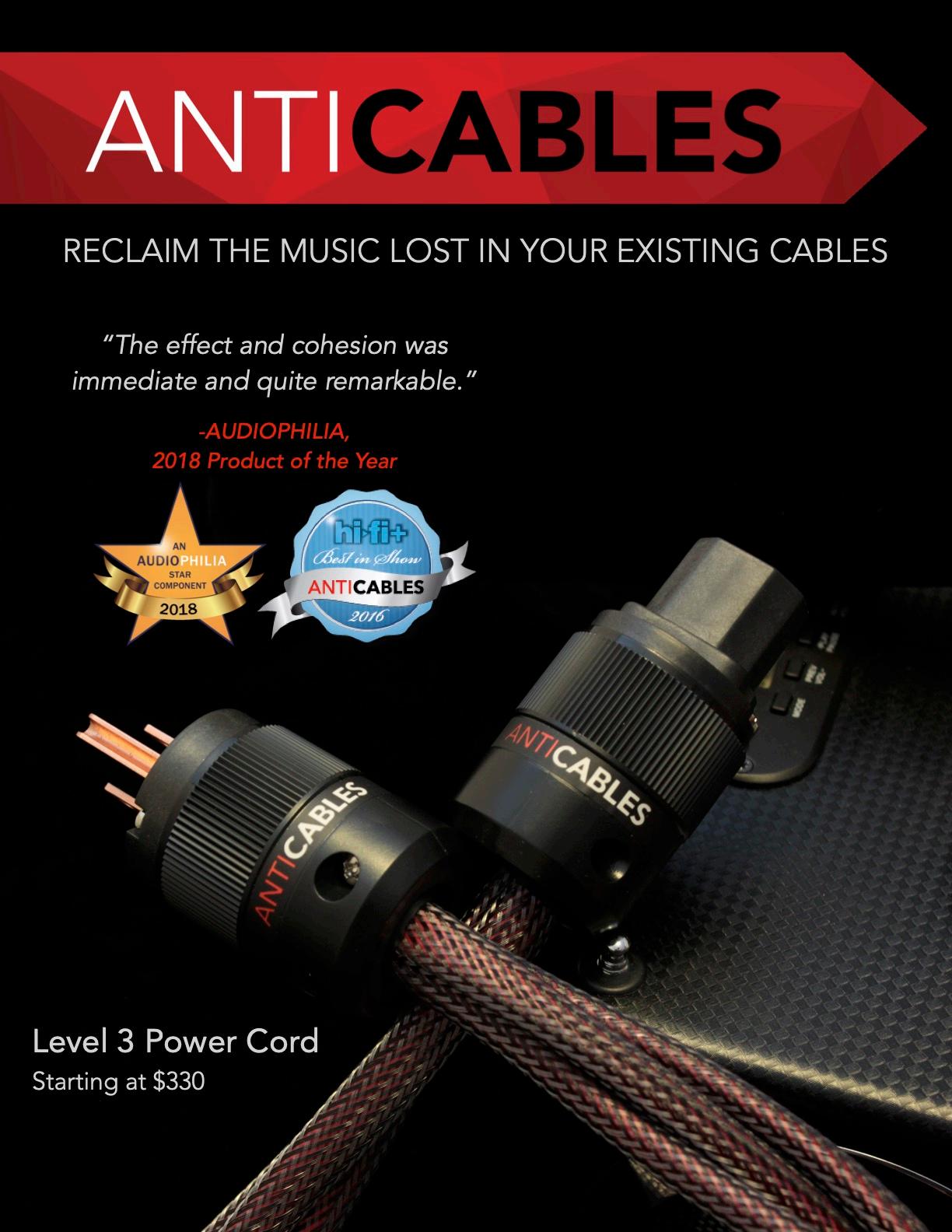

remote control is included as well. The Halo HINT 6 retails for $3199.
The HINT 6 weighs in at 33 lbs, and offers 160 watts of class A/B power into 8 ohms, more than enough juice to get the party started. The amplifier section is indeed a John Curl design. There is also a headphone amplifier, a USB
during our time with the amp, the Scansonic MB1 B (Review Link), and the Acelec Model One (review forthcoming), both excellent stand mount monitors of medium efficiency.
Our observations will be an overview of performance with both speakers, as they turned to be excellent matches for the

input, a MM and MC phono stage, both RCA and XLR analog inputs, a subwoofer output, and interestingly, tone controls, which can be bypassed to simplify surround sound interactions. The HINT 6 is attractive in appearance and the workmanship of the case work is very clean. Like all, or most Parasound products, the amp is available in black or silver. Our unit arrived with silver casework.

The Halo HINT 6 was inserted into a system consisting of a Sonore microRendu streamer, a Rega Planar 6 turntable, with Audio Art Cable wire. The HINT 6 drove two pairs of speakers
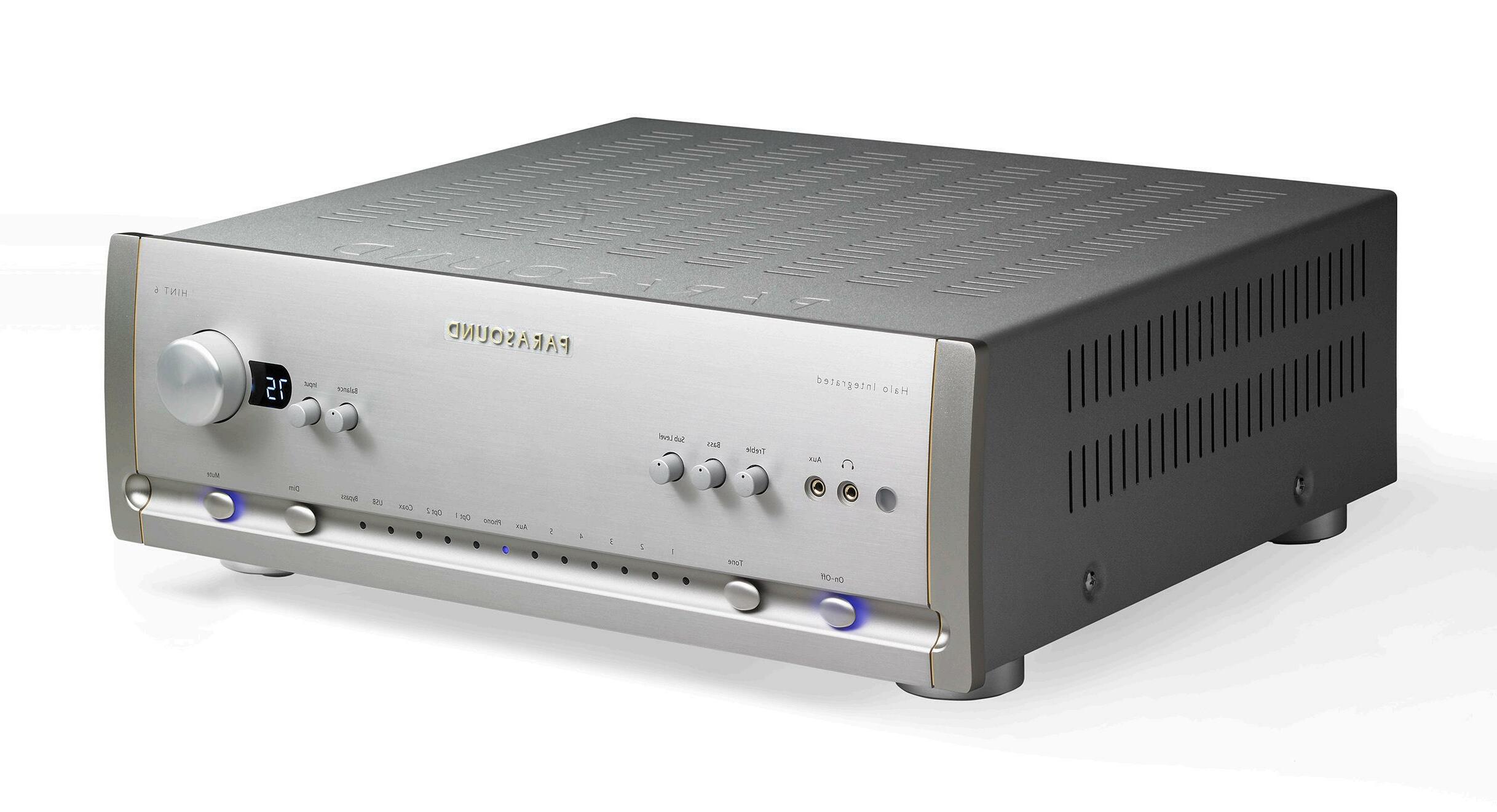
Parasound. No special tweaks were used aside from an Audio Art Cable power cord, and the system was plugged into an Audience power conditioner. The Halo HINT surprisingly ran cool to the touch, even when left on 24/7.
We decided to give vinyl a go to start, to get a handle on the Halo HINT 6’s onboard phono preamp. We spun a US A&M pressing of Fairport Convention’s 1968 self titled album, a mid 70’s Blue Note pressing of The Best Of Herbie Hancock, and Abba’s The Singles: The First Ten Years. After just one side of play, it was clear the HINT 6’s phono stage was up to the task. In fact, it bettered all three of the


modestly priced stand alone phono preamps we had in house.
There was plenty of flesh on the bone, great texture, and tonally, everything fit into place. Hancock’s piano had nice percussive presence, and the horns were beautifully rendered. The flow of the bass and drums was well preserved, and the “live” feeling of the ensemble was palpable. The internal phono
no casual add on, it is high class in every way. In our opinion you would have to spend well over a grand for an external DAC that can compete.


stage is more than good, it is very good, and offers such high value, it should preclude using an external unit.
We focused the rest of the time with the Halo HINT 6 on putting the internal DAC through its paces. We streamed everything from CD rips to DSD from our local library. Spoiler, the HINT 6’s internal DAC module is
Our SACD rip of Mobile Fidelity’s DSD remaster of Santana’s self titled first album from 1969 was a true delight. The Halo HINT 6 was able to showcase the conservative recording techniques Columbia used at the time for rock albums, with hard panning, lots of isolation, and room sound. However it served Santana well, with all the instruments and the fantastic vocals by Greg Rollie all being rendered with precision and superb texture.
The self titled debut, and the follow up,Welcome To The North, by The Music, a band




we adored in the 2000’s, had incredible energy and adrenaline. The Halo HINT 6 made these two albums, both ripped CDs, into sonic spectaculars, with the Northern U.K. band’s blend of subtle electronica, grunge, psychedelia, and beats distilled into a tasty brew. Having seen the band live, we were thrilled at how the HINT 6 got everything right, especially the energy the band brought to the stage.
Another new discovery, folk rock band Jennie Ox, also a 24 bit download, mix very early Joni Mitchell earnestness with baroque and psychedelic touches to achieve a very organic, retro sound. Yet, it is somehow still modern sounding. The debut EP, Duck Season, is a five song tour de force that quickly becomes an ear worm. The band’s secret weapon is mixing to analog tape, and the Parasound absolutely let us hear that tape
The curiously named I Draw Slow, a contemporary band from Dublin, Ireland, makes beautiful, sometimes ethereal folk music. They blend elements of Celtic, Americana, and even classic 70’s West Coast laid back pop. Their self titled, 4th album has just been released, and it is a stunner. It is a beautiful pastoral record, and the HINT 6 brought all the colors of Autumn inherent in this 24 bit, 48 Khz download. We could picture the leaves turning brown and falling from the trees as the album played on. All their albums are available on Bandcamp.
goodness, there was no mistaking it! Going back in time again, we called up an album we have previously used for reviews, Let’s Live For Today: The Complete Recordings, by The Living Daylights. Reading the liner notes more carefully, we discovered that the majority of their recordings were never released, just a handful of singles. Out of the 23 tracks here, 20 have never seen the light of day, so to speak. Their version of “Let’s Live For Today”, a hit for The Grass Roots, is a knock out, as are some of the originals, and several Beatles covers. The Parasound helped unlock this
treasure chest of late 60’s acid rock with lovely precision. The CD mastering is immaculate, with both mono and stereo mixes for a number of tracks.
There were really no ergonomic issues to find fault with. The Halo HINT 6, had a very low noise floor, did not run hot, and was fully remote controllable. The amp had full grip on the speakers, with no obvious sonic gaps. As a bonus, the Halo HINT 6 is a handsome
the Parasound Halo HINT 6. You need tone controls to sculpt your sound? A subwoofer output? Preamp output? Balanced connections? A DAC with numerous digital inputs and Moving Magnet and Moving Coil Phono preamp? All boxes checked, and even more.
The amplifier itself was an excellent match for the Scansonic and Acelec monitors. As with any other high quality component, better
addition to any system.
Conclusion:
I really enjoyed the Parasound Halo HINT 6. I mean really enjoyed it. It exudes class, sounds wonderful, and is built to a high standard. I also really like the price. For $3200 you get an amp designed by John Curl that will drive any speaker, a DSD-Capable DAC, a phono preamp, and numerous other functional bells and whistles.
If shopping for an integrated amplifier in the $3000 range, we honestly can’t think of another product we would recommend over
cables will make a difference, as would a high quality power cord. Other than that, the Halo HINT 6 is a plug and play device.The last word is the Halo HINT 6 is an astounding value, and a great integrated amplifier
Parasound Halo HINT 6 Integrated amplifier: $3199
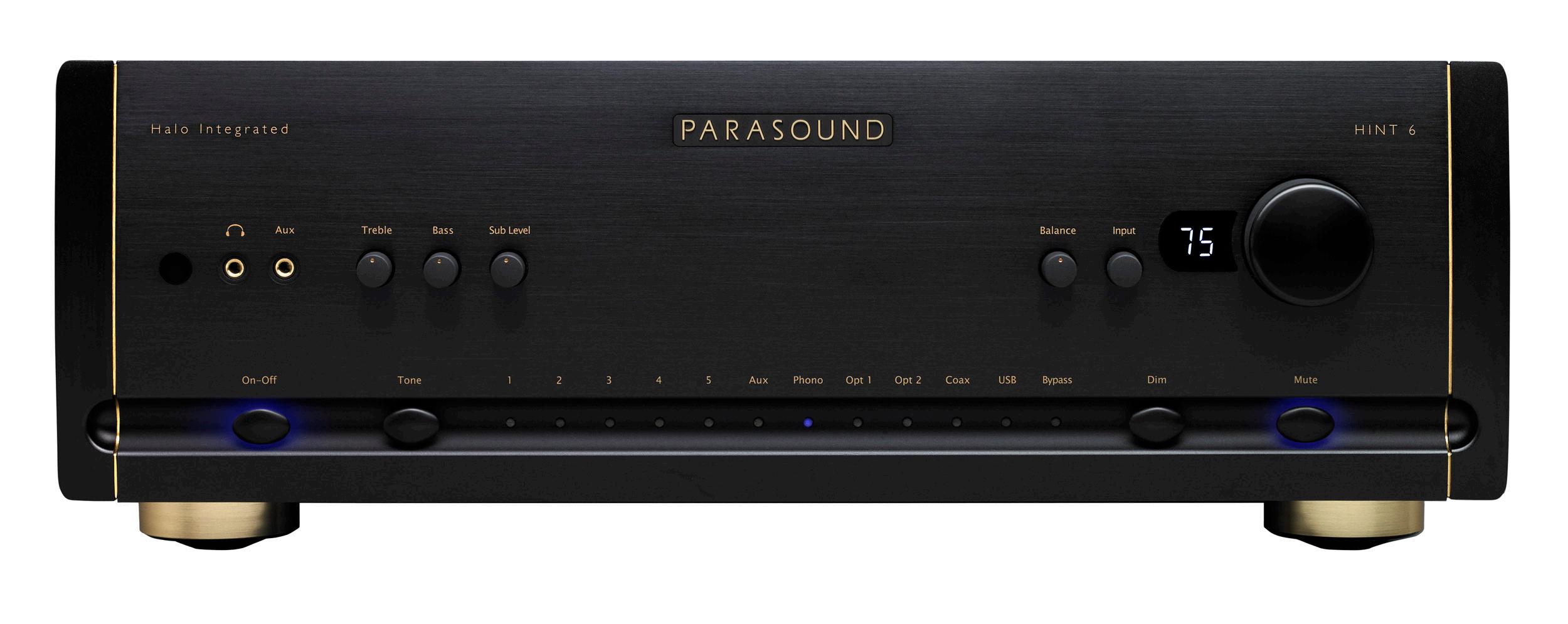

Product Information page: https://parasound.com/HINT6.php

 Vincent Van Gogh - The Flowering Orchard, 1888
Vincent Van Gogh - The Flowering Orchard, 1888





 HermanMiller
HermanMiller

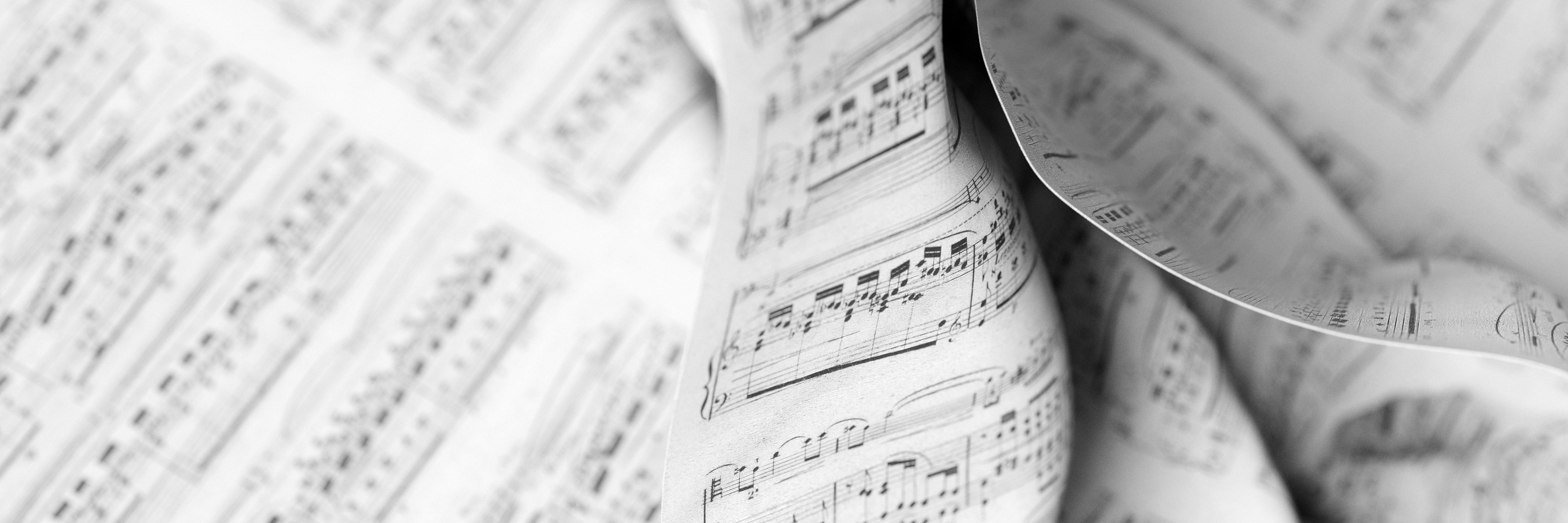 By Irina Kuzminsky
By Irina Kuzminsky
For this review

I thought I would turn to my own instrument, the piano, and a recently released double album by Víkingur Ólafsson, an Icelandic pianist who has been hailed as the “new superstar of classical piano” (Daily Telegraph). He describes this release, From Afar, as his most personal yet, and it is easy to see why. The repertoire chosen ranges from pieces connected to his childhood to the enigmatic miniatures of his musical hero, Hungarian composer and pianist, György Kurtág, whose piano pieces provide the leitmotif for the albums. Even the title, From Afar, is inspired by Kurtág’s Aus der Ferne. Ólafsson recounts his inspirational meeting with the 96 year old Kurtág at the Budapest Music Centre in September 2021. It had a profound impact on him, returning him to his musical roots and initiating a reset in his approach to music. In Ólafsson’s words, “Talking with him and playing for him genuinely gave me a different perspective on
life and on music.” From Afar is both a tribute to Kurtág and a thank you. The reason behind the double album is that Ólafsson recorded the programme on two different pianos, the first a grand piano, and the second an upright. This once again harkens back to his childhood when he would practise on two pianos, his parents’ grand and the upright in his bedroom. Having both owned and played on both uprights and grands, the whole concept is intriguing, for each instrument certainly opens up a different soundworld, the one more resonant with a greater palette of colours, the other more intimate, at times more muffled and more percussive. For pianists the appeal of such an exercise is obvious, but I imagine you could also have a lot of enjoyment as a non-pianist comparing and contrasting the grand and upright albums using hi-fi equipment, seeing what new nuances and details would be revealed. How does decay compare? Resonance? Colour of top and bottom registers? Depth? Sustaining


 Henri Cartier Bresson
Henri Cartier Bresson

pedal effects? Plenty to explore in the listening.
by Bartók and Birgisson, a world premiere by Thomas Adès and a moving “Ave Maria” by Sigvaldi Kaldalóns, with seven piano miniatures by Kurtág from his Játékok (Games) serving as the underlying constant. Most of the pieces on the albums are short, and each sets the next off in a beautifully judged way so that a kind of conversation develops between them across time and across musical styles. Binding them all together, apart from the pianist’s intention, is his deep sense of “Innerlichkeit” or inwardness, a deep musicality and purity which does not play for virtuosic effect but gives a sense of constant rediscovery of the music. And the eclectic mix keeps your interest constant with unexpected juxtapositions which nevertheless somehow ‘work’. The album opens with a transcription for piano of a work by Bach, this one originally for organ. It is the first of several transcriptions, which include another Bach organ work and solo violin sonata, and Mozart’s “Laudate Dominum”. These sorts of piano arrangements would have been very popular in pregramophone pre-recording days, when the only way you could recreate an orchestral performance for yourself, or an opera perhaps, or even chamber music, was through piano arrangements. Ólafsson proves this artform lives on and deserves rediscovery and renewed
listening even in our recording rich times. In his hands the arrangements bring new insights to the music. Bach’s music has always lent itself particularly well to transposition to different instruments – there is a kind of universality about it that does not bind it to any one medium and these arrangements reinforce this. It is interesting to compare the Bach pieces on grand and upright pianos: on the upright you immediately hear more mechanical noises, the pedal creaking (creaking pedals tend to be a mainstay of older uprights!), the sense of the felt covered hammers hitting the strings, the pianist’s breathing – all are more pronounced. The sound is somewhat mellower and thinner at once, with less depth of colour and resonance – the Bach sounds somewhat more percussive for instance – but the soundworld has its own charm.
The arrangement of Mozart’s vocal solo, “Laudate Dominum”, is one of the highlights of the album for me for the sheer beauty of the music and of the playing. Particularly on the grand Ólafsson makes the vocal line sing, while on the upright the vocal line comes across as more pianistic.
The three Schumann pieces interspersed in the programme once again bear witness to a profound musicality. The pedal points are beautifully recreated for piano in the first of the Studien für den Pedalflügel (arr. for solo piano). I love the unevenness and the rubato of “Träumerei” – it helps one to rediscover this


metronome, and to speed and virtuosity at the expense of musicality and soul, and it is a relief to find myself being proven increasingly wrong of late. “Vogel als Prophet” again displays subtle musicality and a sense of sheer enjoyment of the music. The Schumann pieces transpose just fine to an upright, though the study has a decidedly more muffled sound: there is less articulation evident but a greater wash of colour. The two Brahms Intermezzos from op.116 give another example of Ólafsson’s beautiful sense of rubato. He is able to bring out the inner soul of these pieces revealing inner landscapes with a freshness and a sense of renewed discovery of music some of us might be very familiar with. The decay of piano notes is very well captured on the recording, particularly of the grand, and very evident here. There is no heaviness to Ólafsson’s Brahms, more a whiff of melancholy. On the upright the Brahms is pianistic and intimate, if not as rich in tonal colours. And, it goes without saying, the sustaining pedal overall is not as sustaining as on the grand. Bartók comes up at his most melodious and plaintively beautiful, with Ólafsson’s sensitive rubato picking up on an authentic folk element and whimsical feel so often missed in interpretation.
The Kurtág miniatures weave in and out of

the album, following on seamlessly from Bach or Brahms or leading into Mozart or Schumann. Their soundworld and use of the colours of the piano is quite different, an exploration of different registers and mysterious soundscapes of note clusters and glissandi, some seemingly evocative of snow and ice in the best Debussyesque manner (think “Les pas dans la neige”), most exploring the far reaches of the piano and the sonorities of the damper pedal and of note decay. All intriguing and enigmatic and dense in content. Listening to them I think they must be a lot of fun to play and I am tempted to get a score. By the way, the first Kurtág piece comes up as a revelation on the upright, opening up a different soundworld to the grand. The top high register is drier and more percussive, something born out by the next Kurtág offering. The bell-like quality achieved in yet another Kurtág piece once again compensates for any loss of colours. The haunting quality remains intact though on the upright, even though you can hear more of the mechanical aspects of piano playing, including the fingers executing glissandi. All these extraneous noises become integral to the performance.
At the end Kurtág returns enigmatically to round the album out sotto voce, with decays and pedal playing a huge role.
In short, a soliloquy for piano rendered open for others to share in. And to see how seamlessly the whole fits together you will simply need to have a listen.
AKRM

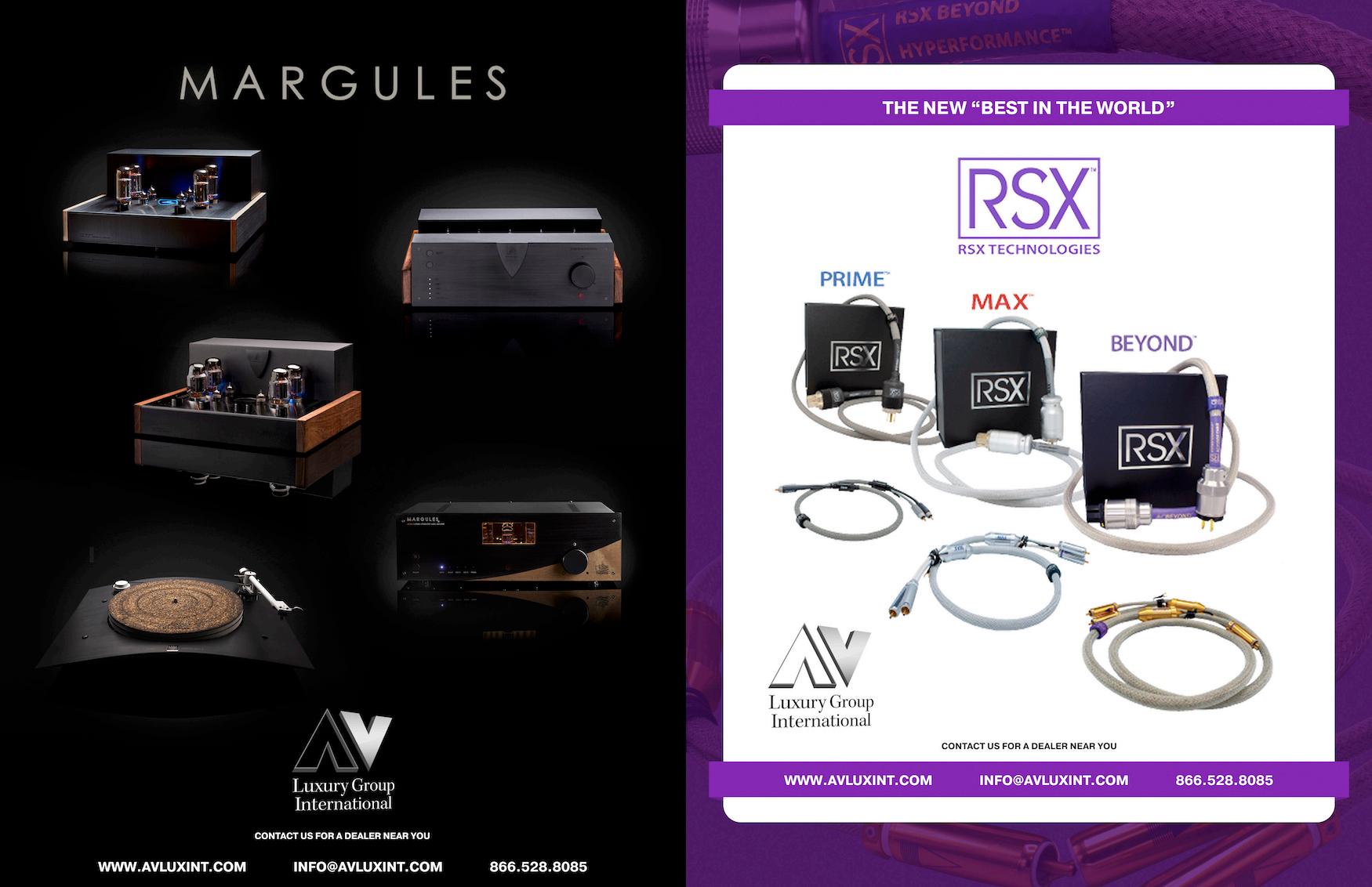



 Imogene Cunningham
Imogene Cunningham

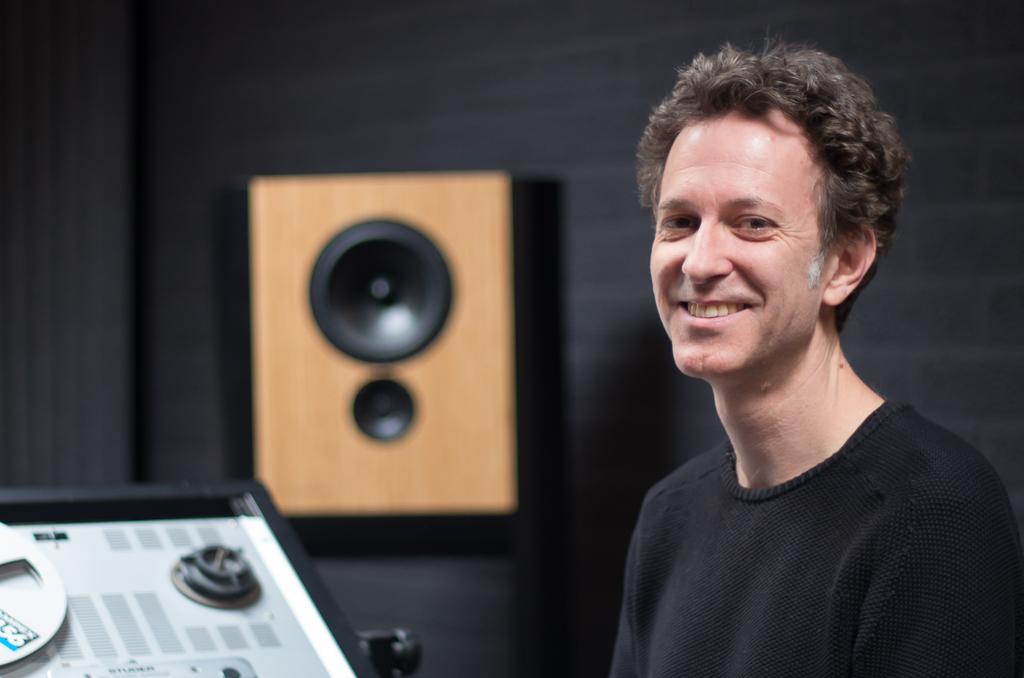

I came across Grimm Audio and its founder, Eelco Grimm, in my review of the Grimm Audio MU1 streamer, a state-of-the-art component. As I wrote in my review of the MU1: “A Roon Core and streamer of the highest caliber with extreme transparency and resolving capabilities, an almost preternatural ability to render as if analog, which translates to a natural, wholly engaging, and beautifully musical experience.”

This stoked great interest in learning more about Eelco Grimm, though I wanted to leave the technology behind and learn more about Eelco, from a life perspective.
The review turned out to be much longer than I had anticipated. So this is but part one of a
very personal and informative interview with Eelco Grimm.
I’d like to get a general idea of where and how you grew up, what influenced your life, how your parents may have influenced a love for music, possibly audio. Basically those things that started you on the journey to where you are now. So this is much less a technical interview than it is an understanding of you and the personal and the inspirational.
I was raised in the southern province of The Netherlands called “Noord Brabant” where Grimm Audio is now also based. We moved often between towns in the south since my father was in the Dutch Air Forces as a fighter pilot [see picture], and during his service
 Henri Matisse - Flowers in front of a Window
Henri Matisse - Flowers in front of a Window

between the 50’s and 80’s pilots typically were moved from squadron to squadron regularly. There were four military airports in Noord Brabant and my father has been stationed at all of them.
During my high school days I lived in Waalwijk, quite an average working-class town, but close to a wonderful nature reserve. I did enjoy myself, but when I was 17 in the mid eighties and moved to Delft technical university to study electronics, it felt like ‘coming home’. I really love to have architecture from many centuries around me, plus a lively vibe of students, artists and diverse other people. I moved from Delft to Utrecht in 1993 and that’s a city that carries this atmosphere in spades.
Was there music in your home? Record Player? CD player? If not how do you think

that affected you? How did music affect your early life? Was there a family member or sibling or another person, who inspired your love for music (art, aesthetics, design) and/or audio?
First, and likely most important, there was live music. My mother and I played piano (classical music and some basic boogie woogie). My father played various recorder flutes and my younger brother played guitar. He soon turned to electric guitar and I started to build his amps, so I had a goal for my electronics hobby. Both my parents came from families where everyone played an instrument. My grandfather of father’s side played violin and conducted several choirs. He did so already in Indonesia where he worked as a teacher from 1916 till 1935 (and where my father was born in 1930). I continue this tradition, singing
temor in a classical 25 people choir. A true highlight every week.
My parents were also highly interested in music playback, from their youngster days. After the second world war, my father had become crazy about US jazz and he collected 78 rpm jazz records from George Shearing quintet, Gordon Jenkins, Dizzy Gillespie, Stan
Kenton, Artie Shaw, etc (I have them now, and intend to buy a proper cartridge to play them).
In the early 50’s my mother worked for a national Dutch radio broadcaster and with some discount she bought a truly high end tube radio: a Philips Bi-ampli [see picture]. That was already before she met my father. Later in the 70’s my father bought Infinity (SM152?) speakers, a Pioneer SX-880 receiver, a Technics turntable (SL1610?) and an Aiwa cassette recorder. Quite a serious system for that time. As a kid I was not allowed to play with this set, although I soon knew better than my dad how everything worked…
I am certain that all this love for quality music playback around me has had its influence on my future. And the same is true for design furniture and art (my grandfather on mothers’ side was a tailor and collected paintings - he often traded a hand made jacket for a painting with painters from the Laren school). What was your very first system then? How did you listen, in terms of Digital or Analog? How did it make you feel, think?
I mostly listened to radio and cassettes. My first radio was the old Erres tube radio of my father [see picture]. Since it did not receive FM I changed to a solid state FM tuner, connected to the first amplifier I built myself (I guess I was 13 years old). In the late 70’s and 80’s cassette tapes were the main source of music for young people on a limited budget like me. I taped LP’s of my elder brother and made mix tapes from radio programs, annoying my family during dinner when my favorite radio program was broadcasted… CD was introduced around

the time I moved to Delft. I remember listening to a CD player in a hifi shop in 1983 but I was not overly impressed. Besides, I could not afford it. What musicians did you admire then, enjoy, love as a young man? Why? And most memorable epiphany that has come from listening to music or turning a good friend or a significant other on to music?

I have a vivid memory of music we played in the car when we went on holidays as a child. Two tapes were played time and time again so they are strongly connected to a holiday feeling: Sounds of Silence Paul Simon and Art Garfunkel, and a compilation album of famous Dutch 60’s singer Boudewijn de Groot. I still love those records.
My elder brother Peter had a large influence on my musical taste when I was young. He is ten years older than me and had a good collection of great 70’s albums that I loved and love, like Emerson Lake and Palmer, Pictures at an Exhibition; Rush, Hemispheres; Supertramp,
When I moved to Delft to study I joined a group of students who formed a new wave band. I became their sound engineer and we hang out together regularlyeven more when three of the band members went to live in the same house. We played Kate Bush - Hounds of Love, Prefab Sprout - Steve McQueen, Simple MindsNew Gold Dream, Tears for Songs from the Big , Japan - Tin Drum, etc and had a lot of fun. We went on holidays to Greece in an old Ford Transit and one night slept on a beach surrounded by cliffs, playing Pink Floyd’s “Wish You Were Here on our getto blaster.” That’s quite a Apart from music playback, live concerts have been very influential on me. Perhaps my most impressive concert has been Rock Werchter (Belgium) in 1987 with still just one stage and on that an incredible line up of Iggy Pop, Echo and the Bunnymen, Pretenders, Eurythmics en Peter Gabriel. It was like continuous musical ecstasy, all of them played so well.

In 1987 I switched studies and went to the Royal Conservatory in The Hague, studying Sonology (contemporary electronic music) and Music Registration. One year later John Cage was artist in residence for two weeks and a wonderful theatrical performance of his piece ‘Inlets’ made a huge impression on me. Around that time I started to visit classical and jazz concerts more frequently, which was often enlightening. I remember going to a Bach St. Matthew Passion in Rotterdam. I brought the score and read the piece during the concert, which was a next level experience. Also memorable was the first time I went to a Mahler symphony concert in the Concertgebouw in Amsterdam. The bass of the big drum in that hall was as from another world!
Live pop concerts that I have fond memories of are for instance by Dutch artist Fay Lovsky in the Utrecht concert hall Vredenburg, Paco de Lucia in Palau de la Musica, Barcelona and Gillian Welch in Paradiso, Amsterdam (she even got the people at the bar to shut up…).
And dancing. I enjoyed ballroom dancing in my teenage years, and went to dance Tango in my thirties. A few years ago I shifted to Cuban style Salsa with my girlfriend and we dance every week, which is a great joy. Of course I now have a special love for tango and salsa
Brown, Prince, Fat Boy Slim, Chemical Brothers, Red Hot Chili Peppers, Urban Dance Squad, etc.

Last but not least, once high end audio came into my life there were some wonderfully great experiences during audio show demos, notably those of John van der Sluis of the underground hifi magazine Audio & Techniek (later more) and Ed de Jong of Audio Note. They played Frank Sinatra, Nat King Cole and Billie Holiday and it was enchanting. Most dear to me are my visits to my friend Peter van Willenswaard in Rotterdam. He had a crazy good audio system based on vintage 1946 Vortexion (military) amplifiers and Quad ESL57’s, with subwoofers and a tube phono pre of his own design. We played Gilbert & Sullivan and other jaw dropping 50’s Decca records. And French chansons of Jacques Brel, Leo Ferrer, Barbara. I have never experienced any audio playback that was so deeply emotionally touching as that. It still is my reference for what we strive for at Grimm Audio.
What catalyzing event put you on the road to high-end audio?
When I moved to Delft in 1984 for studies, I joined student association DSB. One year later I made friends with a new novice at DSB, Menno Spijker, who gave me his collection of Audio & Techniek magazines to read. Audio & Techniek was founded in 1982 by John van der Sluis and Peter van Willenswaard, and published comparative equipment tests with lots of measurements, plus DIY designs and reflections on audio and technology in general. It was a platform for many authors, but the
articles of Peter van Willenswaard caught my immediate attention. Peter took the reader with him on his adventurous discovery journey into high end sound with tube amplifiers. It was written so pure and honest, and resonated so well with my personal drive that I could not stop reading and after a sleepless night I had become a dedicated audiophile. Music and its sound can lead one to a deep emotional core in the soul and it turned out that the electronics of an audio system could keep you at a distance of that core or invite you to go even deeper. For me this seemed like a fundamental aspect of life.
Soon I contacted John van der Sluis and became one of the regular visitors at his office. This is where I also met Guido Tent. At a local electronics store I found a Thorens TD124 for almost free, I bought a phono amp kit from Audio & Techniek and some prototype speakers of Peter. I modified an old Philips stereo amp following concepts from the magazine, and my personal journey had started.
How did Grimm Audio begin and what were the initial motivations?
I had an interest in professional sound engineering already as a teenager and when I learned in Peter’s articles about the impact that audio electronics had on the music experience I knew that I would dedicate my life to bring that knowledge to the recording industry. It felt as if an important aspect of sound reproduction got lost after the 60’s and with


digital audio we were drifting away even further.

After my study at the Conservatory I did another audio engineering course about broadcast audio, in ‘media city’ Hilversum. At the graduation party in 1991 I met audio journalist and publisher
Hans Beekhuyzen who founded Pro Audio Magazine in 1989, together with Peter van Willenswaard (I was one of their first subscribers).
Hans offered me a job and I worked for him as an editor for 9 years. This is when I moved to Utrecht, where the magazine was based. Peter taught me about measuring and listening and we became friends. In 1997 I started my own recording company, Fairytapes. I managed to buy a few Schoeps tube microphones and I asked Peter and Guido to help me build custom tube studio equipment like mic pre’s, shunt regulated tube mic power supplies, a mixing desk and an AD converter. To have more time for Fairytapes, I quit at the magazine in 2000 and applied for a job as lecturer at HKU University of the Arts Utrecht (1 day a week).
In 2003 Guido, Peter and I were working on an AD converter and noticed that a certain Bruno Putzeys of Philips would give a talk about the design of a discrete Analog to Digital converter at the Amsterdam AES Convention. Peter and I went there, were blown away by his presentation, asked him after the talk if he was willing to license his design to us and he timidly asked if he could perhaps join us. Soon we decided to found a company with the four of us, we developed the AD1 and “the rest is history” as they say.
AKRM




You’ve seen the movies where the piece opens at the narrative’s conclusion with expository voiceover, while the remainder of the show is presented as an extended flashback…Well, I’m going that route with this review; punchline first, blather to follow…Scansonic HD’s MB2.5B is a heck of a loudspeaker. It’s slim and attractive while delivering sonic excellence in its price range.
Now for the flashback…[fade to digital black]

The folks at Dantax are known for their svelte Raidho and chunky Gamut premium speakers, but the reasonably priced Scansonic HD lines address those who haven’t dipped into their trust funds just yet. Raidho and Scansonic share a close family visual aesthetic, as well as similar design choices; a slim front baffle mated to a relatively deep, teardrop cabinet; a slight tilt away from the listener to aid the crossover in time alignment, and a Kapton–laminated, true aluminum ribbon for the top end. The short ribbon, manufactured in–house, lives in a sealed enclosure and is coupled to a short throat racetrack horn to control dispersion. The MB Series is Scansonic’s high end family, with the M Series in the middle and the utilitarian L Series at the base. In a dark listening room, you could mistake the MB2.5B for its fancy cousin, Raidho Acoustics’s X2. “Reasonably priced” is a relative term, and the MB2.5B being a Danish product means the base model will run you $3490 per pair for semigloss “silk” black or

gloss white, and $4500 for a rich, real walnut veneer. The MDF cabinets are sourced from elsewhere in the EU, but assembly is done in–house by hand entirely at their factory in Denmark.
You may have heard of Scan-Speak, the storied Danish transducer manufacturer. Scansonic was build “on the back” of ScanSpeak, as the Dantax Group owned the speaker company from 1977 to 1988. Scansonic’s MB series are basically less expensive mini Raidhos, incorporating trickle down Raidho technology. Engineering and development is done by the same folks as Raidho. When asked via e–mail what aspects do Scansonic HD products share with their Raidho relatives, Morten Kim Nielsen, Sales & Marketing Director for both Scansonic HD and Raidho, stressed the shared parentage of both brands. “The (Scansonic HD) products are developed with the same DNA as Raidho. By the same people. They are also built by the same people.” A closer look at the MB2.5B reveals the use of strong and light carbon fiber in both cabinet and transducers. The 5.25" mid and woofer both utilize a woven carbon fiber cone, sans dustcap, which lends them an unusual look. When asked about this feature shared with Raidho, Nielsen told me that the design choice reduces breakup. The cabinet’s top plate and front are also fabricated with carbon fiber inlays.

A relaxed, second order crossover is employed and, with a sensitivity of 88dB, a moderately beefy amplifier is needed. The manufacturer recommends “…high quality amplifiers” with greater than 50W of power. I
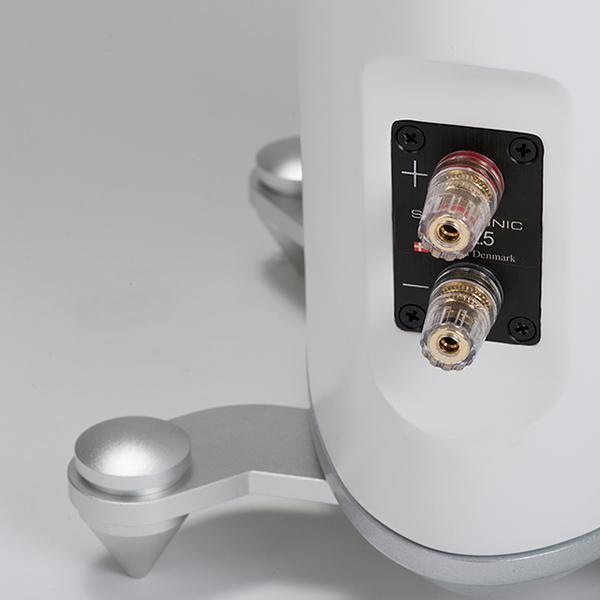

drove them with my Parasound JC 5, which can deliver about 500 Watts into the speaker’s 6Ω impedance. In my room, the little gals landed pretty much where others had; 80" from the listening position, about 74" apart with the rear radius 34" from the rear wall. This is largely dictated by my listening position, itself imposed by my couch location.

Unlike rear–ported designs, the MB2.5B has a relatively large, downward–facing cylindrical port, which allows placement closer to a back wall without LF buildup. Having been in a jazzy mood of late, I started my listening with 3 Hand Clapping’s recent ultra–fi release, Way Over Yonder on the Sound Liaison label [352.8 WAV]. Usually, I start up an album and begin typing. Upon the first notes popping out of the Scansonics, my head snapped up and my attention was fully focussed on the chronicled live event. My notes say, “Wow! Crazy good sonics with an intimate, believable soundstage.” At eight times the normal Compact Disc sample rate, this album really illuminates the advantages of careful recording and post–production at high sampling rates. The percussion sparkles and pops with a palpable “you are there” sense of inclusion in a cozy meeting of musical minds. The MB2.5B shines in this context, neither introducing irritating resonances nor failing to deliver the low frequencies necessary for true engagement.
By the way, Scansonic specs the MB2.5B’s frequency response as 36Hz to 40kHz ±3dB, so they go surprisingly low. When I first added them to my rig, I started playback and, after only a moment, jumped up to turn off my
sub…the sub wasn’t even plugged in! Score one for the diminutive black monoliths. Over the course of this review, I tried a variety of low frequency–rich recordings, always with good results. A reference LF track for me is Metallica’s “Enter Sandman” [TIDAL 88.2 MQA], with producer Bob Rock’s pillowy tom tone and Jason Newsted’s propulsive bass. I have played it through a variety of consumer and professional rigs, and I know it well. The MB2.5Bs acquitted themselves admirably, given their size. Yes, my subwoofer would have lent the bottom octave slam the floorstanders lacked, but I was happy miming air guitar along with the boys and did not miss a thing.



Back to Way Over Yonder The venue for the session, Studio 2 at The Netherlands’ “MCO” or Muziek Centrum van de Omroep in Hilversum provided the recording’s natural ambience, warmly conveyed through the little black towers. At face value, that 40k upper frequency response spec I tossed out earlier might suggest that the MS2.5B would exhibit a shrillness or overt “presence”. In fact, they are just the opposite, with a natural top end that never calls attention to itself.
Next, another live jazz recording that turns the previous one on its head, fidelity–wise… The Darrell Grant Quartet’s 2022 release, The New Black - Live At Birdland [Lair Hill Records, 44.1 ALAC] is an inspired performance, captured in a less than ideal manner and environment. The midrange – heavy, slightly tubby recording with too distant miking along with occasional distortion, paints a boomy, overly reverberant picture trapped in a minuscule soundstage. It’s all offered up in equal measure to the listener through the MB2.5B. No understated or overt

beautification, no tasteful subtraction; it’s presented straight up, no chaser.
The credits for the Everly Brothers’ “Gone, Gone, Gone” [TIDAL 88.2 MQA 2007 Remaster] reads like a Who’s Who of Golden Age country recording, with Chet Atkins, Harold Bradley and Sammy Pruett on guitar and “Buddy” Harman manning the percussion. Floyd “Lightnin” Chance laid down the bottom while Bill Porter rode the controls. For a vintage recording, the soundstage is huge, the mix is bold, the whole a boisterous rockin’ celebration. The MB2.5Bs had me happily reliving the analog days of big hair, acoustic guitars and tight vocal harmonies.
Also in a retro vein, Tami Neilson’s track, “Baby, You’re A Gun” [TIDAL 44.1] off of her 2022 release Kingmaker, showcases her torchy approach to the Sergio Leone–inflected orchestration. Despite the reverb–drenched production, each element of the mix was presented with clarity and distinctiveness thanks to Scansonic’s expert design chops. The manufacturer recommends 100 hours of burn in, but I found the speakers sounded satisfying right out of the box and only improved a bit, with the imaging and top–to–bottom integration increasing over time.
Over several weeks, I drew from a wide range of genres and music styles, from Eminem’s entertaining and thought provoking new double album Curtain Call 2 [44.1 Qobuz], to Dorota Barová’s breezy and charming 2021
release Dotyk [44.1 Qobuz]. For more effete flâneurs, there were higher brow selections too; from Vladimir Jurowski and the Bavarian State Orchestra’s immersive (in the old sense) live 2022 recording of Brett Dean & Beethoven: Orchestral Works [48k Qobuz] to Olivia Belli’s creaky and evocative 2018 Erik Satie: 3 Gymnopé dies [TIDAL 44.1]. Since I’ve been in the thrall of Netflix’s Watchman series of late, I even dipped into the 1952 “studio cast recording” of Oklahoma! In mono no less, which allowed me to get a handle on how the speakers in my room rendered both the phantom center specificity and the in–built distortion. In case you were wondering, the phantom center was narrow and as tall as the speakers…

The MB2.5B sits comfortably in what I consider the higher end of midprice. Most folks would balk at throwing down $3500 for a pair of speakers when they can have a grand ol’ time in Vegas instead. For audiophiles however, where adding an extra zero to that amount will buy you midline Raidho TDs, that is not crazy money. Upon unboxing a pair of black MB2.5, I was reminded of the NHT 3.3, a late ’90s floor stander designed by mentor and friend Ken Kantor. The 3.3 saw early use of narrow front baffles and deep cabinets, and left a lasting impression on me. The MB2.5B is a minitower, with faces a mere 7" wide, including a ½" radius on either side. As delivered, the MB2.5B pair arrived in an easily wrestled paperboard box without a grill, so I didn’t have to decide

whether to remove or leave them on. The only assembly required were four screws per speaker to hold on the front and rear cast aluminum outriggers. The feet are blunt,

elastomer–tipped cones, suitable for bare floors or carpet. The beefy binding posts made hookup easy. For this review, I pressed a pair of ANTICABLES Level 4.2 FLEX speaker cables into service. Unobtrusive. Dare I say polite? Those may seem like faint praise but I mean that in the best possible sense. Nothing sticks out with the MB2.5B’s reproduction; no one–note bass or tooth rattling “presence” peaks. The drivers are nicely integrated and all are well behaved. More elusive aspects of music reproduction are not glossed over…I happened to launch the macOS–native version of TIDAL’s player app, and the difference between its slightly shrill and distorted playback and the less jittery, far more resolving Amarra Luxe were immediately obvious through the Scansonics. Same electronics, cabling and stream; I changed only the playback application. So much for those who claim “bits are bits”. Hah, I laugh at your concrete thinking!
All is not sweetness and light…I’ll mention a few aspects I didn’t enjoy but they were minor. The MB2.5B cabinets are internally braced with acoustic dampening material loose inside the speaker, but a Rap Test, knuckles not Hip Hop genre, indicates where those braces are and aren’t. I have to assume this contributes to the speaker not behaving entirely well when pushed really


hard. Driving them to loud playback volumes, which for me is above 90dBSPL A weighted, results in a subtle shift in tonality, pushing the midrange forward. The bottom can, at times, tend toward slightly bloomy and slow. Again, these are minor faults, and not something one would likely notice at normal listening levels.
From the classical beauty of Simon Crawford-Phillips and the Vasteras Sinfonietta’s 2022 release Reflections on dB Productions to the over-the–top production of Rina Sawayama’s dancey shades of retro Gaga latest on Dirty Hit, the MB2.5B proved to me they were suited to all styles of musical entertainment. Apologies to Herodotus, but neither pop nor country nor hiphop nor darkness of metal prevents the MB2.5Bs from accomplishing, each one, the task appointed to it with the very utmost speed. Their minimal footprint, choice of finishes and reasonable height all make for a positive spousal approval factor. The verity that they make lovely music only adds to their appeal.
Looking for a high performing loudspeaker with a sophisticated air and a small envelope?

The Danes have a way with transducers, and the folk at Scansonic HD may have just what you’ve been searching for. Scansonic HD’s MB2.5B is the little black dress of loudspeakers; it works well with every genre in intimate environs. An affordable price and dapper design sets the MB2.5B apart from most of the boxy competitors and, with its
deep diving low end, truthful midrange and silky top, it’ll deliver the goods without draining your bank account. It may have a generic name but, but it’s anything but ordinary.
mm. (BxHxD): 178 x 998 x 286 Weight, kg.: 15,6 per unit Freq. response: 36 Hz – 40 KHz Impedance: > 6 ohm Sensitivity: 88 db Crossover: 500 Hz + 2600 Hz / Minimum phase Enclosure: Curved, heavily braced, ventilated box design with front loaded port and adjustable aluminum feet Drive units: 1 x Ribbon tweeter · 1 x 5,25” Mid/ Woofer · 1 x 5,25” Woofer Black-silk, White-silk or Walnut
high


These are the most immersive, dynamic, detail-rich, nuanced, elegant, engaging, emotional, and yes, musical speakers I have ever heard. By far.


Timothy Roth, Positive Feedback

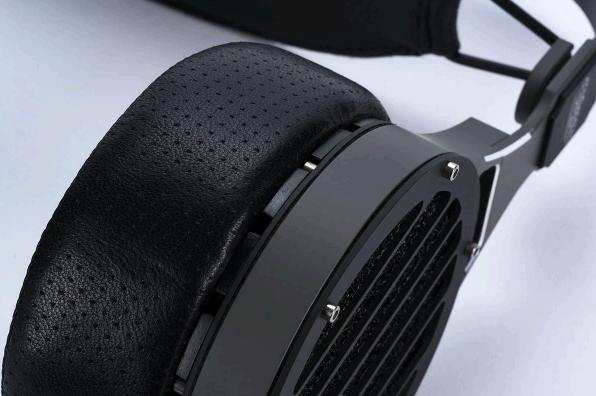

Not that long ago I discovered the electrostatic headphone world and also that which I had considered unobtainable—“incredible ‘you-are-there’ transparency, deep detail retrieval, and captivating musicality.” In the dress of an electrostatic headphone, the unobtainable had



been attained. Technology is clearly and rapidly on the move as attested to by my review of the ZMF Atrium, itself a citizen of three headphone worlds—planar, dynamic, and inclusive of electrostatic. Huzzah!
Nearly nine months later there is yet further evidence of a consilience—act of
concurring; coincidence; concurrence— between headphone worlds as embodied by the Abyss AB1266 Phi TC ($5995–$8995). In this case, the bridging of the three distinct worlds by the Abyss AB1266 is even more compelling. The Abyss, it seems, has transcended every headphone save one, to date, across these worlds, that one being the STAX SR-X9000 ($6200). Yet, the two are only separated by the smallest of margins and pluses and minuses, here and there, that find them entirely on an equal footing. More on this later.
 Edgar Degas - Danseuse Faisant des Pointes
Edgar Degas - Danseuse Faisant des Pointes
Transparency, resolution and detail seemed like pale descriptors for the STAX X9000 relative to the competition. Not really up to the task when attempting to describe what the STAX X9000 was capable of and how profoundly it “handled things”. The same now holds true for the AB1266 Phi TC as, relative to the competition, it is transcendent in most if not all respects.
the spell is not to be dispelled by any other headphone. That is to say that a palette cleanser will be in order, lest the next headphone should sound closed-in, dark, entirely unimaginative, when, in fact, it isn’t.


And let me state for the record that the five headphones currently in the AKR’s TOP FIVE HEADPHONES list are to a one exceptional! Exceptional in how they weave transparency, resolution, detail and musicality together, seamlessly, song after song after song. The Abyss AB1266 Phi TC, however, is on another level altogether, and this is amazing. I did not expect this level of differentiation, or to put it another way, such a commanding gap in performance between it and all others. But there it is.

Why? Because to complete a listening session with the Abyss AB1266 Phi TC and then to attempt to listen through any other headphone, ANY other headphone, regardless of the upstream components, seems, well, futile. As in, “We are the Borg and ‘your musicloving consciousness’ will be assimilated and undeterred. Resistance is futile.” Or, in this case, you are spellbound, completely captured by the music of the Abyss AB1266 Phi TC, and
Toward the end of last year I proclaimed the STAX SR-X9000, and I paraphrase, the “best electrostatic headphone in the world”. This was owing to the fact that electrostatics or the technology behind them make them, altogether, without peer. That said and as mentioned above, technology has not stood still. The top planar and dynamic headphones have, indeed, bridged the gap. And now the Abyss AB1266 Phi TC makes its presence known and dramatically so.
REFRAIN: Unlike most reviews, this review will be non-sequential, as it will start with how the headphones actually sound and not the process of physically “undressing” them and/or laying out their various parts, specifications, etc. Think of this review then, as a non-linear movie— In the Shadow of the Moon, Kill Bill, Pulp Fiction, The Queen’s Gambit, etc—that, likewise, starts at the end and winds its way to the beginning.
Quiet. Effortless. Pristine. Sublime. Stunning. There are several things that immediately place the Abyss AB1266 Phi TC apart from all headphone contenders and one of those things is its preternatural quiet. The quiet before a band member comes in, before the next pondered word is spoken or sung, during the transition from an interlude, etc. And it, the quiet, begs anticipation and a wanting, like I’ve never quite experienced before. This is just one of the Abyss AB1266 Phi TC’s many talents. The others are its openness and speed, its electrostatic transparency and resolution, its coherency, and its capacious soundstage. The AB1266 unfolds the music effortlessly and with a pristine, crystal clarity that is neither cold, nor warm, it simply is. And in this sense the music is revealed in all of its glory or lack thereof, should the recording in question be poor. But even the poor recording will be transparently unveiled, revealed like it never has been before. And this is a magic which
escapes all others, save the STAX SR-X9000 headphone.

But therein lies the dichotomy of the AB1266, because it is also sweetly sublime in how it engages both sides of one’s brain—the meticulous, detail hungry, bandwidth fastidious listener and also the lover of tone, timbre, texture, the passionate musicophile who needs simply to be moved. And its ability to render a range of tonal shadings/colors is superb. This the Abyss AB1266 does exceedingly well and one is advised to listen/audition only if the price of admission will not call forth pre-stroke tremors or rapid onset catatonia or worse.

The Abyss AB1266 Phi TC will not, however, suffer the weak, watt-ailed, wannabe, headphone amps that cannot measure up or dance or drive it. Understand, this will not be its failing, but that of the watt-less culprit(s) in question. I was very fortunate to have on hand headphone amps ranging in wattage from 2Watts to 6-Watts and each—Aurorasound HEADA, LTA Z10e, HeadAmp GS-X Mini, HeadAmp GS-X Mk II—danced and sang beautifully with the Abyss AB1266, across all chosen genres.
I had initially quoted for the STAX SRX9000 review what I had written for the STAX SR-009S review, the once former flagship: “The SR-009S is as transparent as a summer’s day is long—unrivaled transparency… and without peer.” I subsequently said for the SRX9000, “Scratch that.” The SR-X9000 was by far superior. Well, you’ll need to “scratch that”
again as the Abyss AB1266 Phi TC may well be the separated-at-birth-twin which is on a par with the SR-X9000 electrostatic headphone. It is saying a great deal when a planar headphone can match an electrostatic headphone at its formerly undisputed primary gifts.
The Abyss AB1266 Phi TC soundstage is cavernous, middling, and intimate when called on to be so. The question will, nonetheless, arise, “How deep a soundstage can the AB1266 headphone recreate?” The answer direct from the Abyss AB1266—“Bring on the soundstage and I’ll cover it.” And so it did. Yeah, sounds like hyperbole, right? Well, it isn’t and this was but one of the many mind-boggling talents that this planar headphone, as the synthesis or consilience of electrostatic, dynamic, and planar headphones, was capable of. In truth, I didn’t believe all that had been written and said about the Abyss AB1266 Phi TC. I believe it now. Separation of performers across the stage and at depth—layering—and rock-solid positioning, absolutely phenomenal. I’m sure you can see where this is going.


The Abyss AB1266 Phi TC was paired with the AURORASOUND HEADA HPA (review coming), LTA Z10e integrated/headphone amplifier (award winner), the HeadAmp GS-X Mini HPA (award winner), and the HeadAmp GS-X MK II (review coming). The DACs used were the Mola Mola Tambaqui DAC (award winner), the Bricasti Design M1SE (award winner), and the DENAFRIPS Terminator II DAC (award winner). The streamers were the Aurender N30SA (review coming) and Grimm
Audio MU1 (award winner). An Audience Front Row Cable suite (award winner) and RSX Beyond and Max power cords (reviews coming) were tasked with wire/cable responsibilities. And an Adept Response aR6T4 (review coming) provided the power conditioning/regeneration.
BASS Detailed. Tight. Blistering. Best (as in good, better, best). There was some trepidation, I must admit, to the Aurorasound HEADA driving the Abyss AB1266 with its 2 watts of power. The Abyss at 88db is not at all very efficient and its 50 Ohm impedance requires a good deal of power run across it. So, I began easily, though I had HeadAmps GX-S Mini (4 watts), GS-X Mk II (6 watts) and the LT Z10e (3 watts) to choose from, should things go ‘south’. I began with Dave Holland’s “B-40/M23-6K/ RS-W” (Emerald Tears, ECM) as a first demonstration of dexterity, speed, inner detail, and tonal/timbral shading. In brief, it was an electrostatic rendering—speed, transparency, resolution, copious inner detail—with top to bottom planar weight that rendered tight, fast bass. Marcus Miller’s “Power” (M2, Concord) then rolled in and most fears were quickly put aside, as the HEADA’s 2 watts ‘got down(!)’ with the Abyss AB1266. Nary a clip was heard all through the night. The true test—Eiji Oue’s “V. Infernal Dance of King Kashchey" (Stravinsky, Reference Recording) was next up. As it cued, ominously, all senses were alert for the faintest trace of clipping. Yet,
powerful and thunderous was the opening with the massed tympani (7) and, again, nary a trace of clipping. What there was, in fact, was a beautifully rendered movement replete with excitement, repeated subbass dives and unperturbed, lightning-fast, dynamic shifts. If it could be so with the HEADA’s 2 watts all others need not fear. And suffice to say, their performances with the Abyss AB1266 were ‘over the moon’ and, in a number of cases, more potent, but none were truly more musical than the HEADA. Repeat.

Detailed. The birds. The birds. Sumptuous beauty. Some touchstones reflect directly on the music of the natural world or, in this case, the birds that sing from a distance outside of the recording studio. Olafur Arnalds’ “Árbakkinn” (Island Songs, Mercury (Universal France)) opens and again the STAX SR-X9000 is rivaled, with the songs of the birds present from the very beginning, in alignment with poet Einar Georg Einarsson’s recital. And it is a recital with gravitas, texture, and intention, given but a few inches away from you. This—the electrostatic openness, the speed, coherence and transparency—are what betray this planar headphone as something much more than it is, as it provides a ‘you-arethere’ realism and beautifully distinct timbres.


Repeat. Did I mention the fervid attention to detail retrieval? Yikes!
It is an odd thing, but I can only now truly enjoy choral and live music when an electrostatic system has been engaged for its replay/rendering. Prior to my exposure to electrostatics, I was just fine with the aforementioned music, which I very much enjoyed, played across all components and systems. I then discovered that there was so much more to the music, in all respects, via electrostatics! Voces8’s “Agnus Dei” (Lux, Decca) queues and there is anticipation, as this is an incredibly beautiful piece of music. It opens and a familiar voice is set free. It soars skyward far above the cage of ‘electronic/ transducer’ limitations. This portrayal renders a sky-like openness and airiness and limitless height, that, again, grows beyond all previous incarnations. The venue—St. George’s Church,
brings me to the realm of electrostatic reproduction, free of electrostatics, as did the ZMF Atrium, but the Abyss AB1266 Phi TC portrayal is better still. Repeat.


TREBLE+ Detailed. Soaring. Openness. The needle drops, so to speak, on Dave Brubeck’s “Take Five” (Time Out, Columbia-Legacy) and there is drive and energy, openness and air to Morello’s cymbals, via the HEADA/Abyss combo that makes things so very much alive. The Abyss AB1266 also brings weight and speed and
heretofore. This, in turn, brings, via the Abyss, Eugene Wright’s bass into presence and stark relief as opposed to the distant, bodiless, ghost-like strumming it can often be. Repeat. This—the energy, drive, air, weight—is what one would expect seated at the actual performance. Repeat. It’s that good. After some time spent with Dave and Friends, the Kronos Quartet’s “Aaj Ki Raat”—“Tonight is the Night”—(Kronos Caravan, Nonsuch) is given the nod. And it is as if the stage has expanded in all directions. The various instruments, both exotic—Hindustani tabla, Lebanese nay,

Iranian kemancheh—and the not so exotic— violins, viola, cello, triangle—are given life and weight and speed. And the rendered timbral/ tonal distinctions, shadings, textures, the freed inner details of the various instruments are superb and beyond previous renditions. The STAX SR-X9000 was also very good at this, which sets the two of them distinctly apart from all others. Bravo, bravo!
What happens when transparency is, seemingly, exceeded? Realism? Or, perhaps, seeming realism? This is the conundrum raised by the Abyss AB1266 Phi TC and its easy ability to make the best of the best headphones sound dull and uneventful, while it waxes on clear as a well-made bell or an outstanding opera diva, and as it upends electrostatics. Yikes!
No, I was not prepared for the Abyss AB1266 Phi TC. Why? Ever had a movie built up out of all proportion and it turned out to be, well, supremely disappointing (or horrible!)? First, I didn’t expect the AB1266 to be at all disappointing, but as good as reported? Well, it is that good and even at this price point! It is a herculean effort to let the AB1266 Phi TC go or to even consider doing so.
I think that I’ve said it all. The Abyss AB1266 Phi TC is a phenomenal headphone. It brings an undying passion for musicality and a ferocity for transparency and clarity and detail retrieval, formerly the domain of the best



electrostatic headphones. But this planar headphone speaks that language—electrostatic —fluently and well. Its only current rival is the STAX SR-X9000 electrostatic headphone. That they are both similarly priced is rather telling, in the manner that one gets what one pays for. That said, I happily award the Abyss AB1266 Phi TC our highest award—the DIAMOND AWARD for incredible technical/musical excellence. No doubt, to be seen again at 2023 Best of the Year.
Pros: Spectacular transparency, resolution, detail, with a refinement and ease and natural musicality that one would think mutually exclusive and, in this case, be unquestionably wrong. A truly breakthrough product!
Cons: Power is the Achilles Heel of the Abyss AB1266 Phi TC. You’ll need plenty of it and it will need to be very good (see Systems). And, well, it’s expensive, very expensive.





 By K.
By K.

Santa Barbara, California became a
refuge from San Francisco for me in my adolescent years. Santa Barbara was quiet and clean, the streets were tree-lined, the people talkative and friendly, and the sidewalks barely, if at all, paved. This last point, the
musical loves—folk and rock and a little bit of country. Santa Barbara was where those genres first said hello and gave a goodly and very welcomed accounting of themselves.
Fleetwood Mac, the Doobie Brothers, Cat Stevens, Jefferson Airplane, Marshall Tucker,

Barbara. Nature was free here to ‘intrude’ on my daily strolls to the park, the boys’ club, the gym, the beach, a new friend’s home. My cousins, football players, college age, were seldom if ever home. This gave me free rein to turntables and all available records, which, though few, became familiar prized companions, and a well kept secret. The fellas in SF just wouldn’t understand my new found
muscle-bound cousins, who forever had my back. And, now and again, they’d introduce me to some rather cute girls, younger siblings of their friends. Despite the tears and protests and the begging, I was forced to return home, to San Francisco and confined musical appreciation. That, however, is another story.
In many ways, the new music was an expansion, a wonderful expansion, that I did


 Henri Matisse - Daises
Henri Matisse - Daises
years, as my record collection grew across genres and the ‘expansion’ continued. Personal audio—headphone amplifiers and headphones—has in many ways provided a different kind of expansion for me, an expansion that allows me to hear my music in, well, a more personal and often more profound way. Don’t get me wrong, I still love speakers and amps, etc. But through headphones I have gotten closer to the music than I ever have before. The detail, nuance, the clarity, the whispered barely audible phrases and voices – only a handful of speakers can provide their like (though at much higher volume levels). And there is no room, thus no room reflections/vibrations/nodes, distance from the speakers, etc to ‘mess’ with the music. I have also learned via personal audio that you can have it all! All? Incredible resolution, detail, transparency, and sweet, mesmerizing music. It took the better part of my life to discover this, though perhaps what sparked it all was the confluence of technology and my timely reintroduction to headphones.

headphone amplifier which has been responsible for yet another ‘expansion’. It is an expansion in how I listen to and enjoy music and it has been both eyeopening and wonderful. But be warned, if you love music, are a lover or a novice of headphones, or just headphone-curious the HEADA is addictive in the extreme! Though it is not an addiction that compromises one’s health. Thank goodness!


REFRAIN: Unlike most reviews, this review will be non-sequential, as it will start, below, with how the equipment actually sounds and not the process of physically “undressing” it and/or laying out its various parts, specifications, etc. Think of this review then, as a non-linear movie—Memento, Kill Bill, Arrival, Eternal Sunshine of the Spotless Mind, The Terminator, In the Shadow of the Moon, The Queen’s Gambit, etc—that, likewise, starts at the end and winds its way to the beginning.


The Aurorasound HEADA has a beautifully refined musicality. In other words, it renders one’s music like only a rare handful of headphone amps can, at any price point. What Sugano Koetsu (Koetsu) and Haruo Takeda (Miyabi) are to phono cartridges, Aurorasound’s Shinobu Karaki appears to be to headphone amplifiers or to this headphone amplifier. The HEADA is truly superb in its ability to communicate the ebb and flow of the music and to capture the venue—jazz club, concert hall, studio, chamber, church, etc— where the music was performed! And it does this with such ease and refinement and musicality, that long hours will pass as you listen.
Shinobu Karaki, Aurorasound’s founder and CEO, brings his expertise as an engineer with nearly three decades experience, a musician, and a music teacher to the HEADA headphone amplifier. To date, it is the only one of his products that I know, but I am quite anxious to hear more of Aurorasound’s products and discover their various gifts.
The HEADA is a solid state headphone amplifier and therefore is completely without tubes. However, one would be hard pressed upon listening to not question the prior statement, so musical and fluid, natural and rich is the music rendered by the HEADA. And as a solid state headphone amplifier it is extremely quiet with a vanishingly low noise floor, and detailed, with exceptional dynamic range and refinement. Refinement? Perhaps one way to

describe it is an ease, a supreme ability and confidence to perform, much like a virtuoso pianist or violinist. There is no trying to do or to impress, or nervousness, there is just the consummate ease of the master, ‘doing.’ It is in this way that the HEADA performs and it did this with every headphone in house (see Systems).
The HEADA’s volumetric cube—its soundstage or how it recreates the original venue is, well, very accommodating. It can be exceptionally wide and deep with a given headphone, should that headphone’s proclivities be such. Or it can be intimate or even cavernous as the HEADA was with the Abyss AB1266 Phi TC and the ZMF Atrium. The HEADA’s exactitude of the soundstage in relation to performers—spacing, layering and depth of layering from front to back, positioning —would be, I imagine, enviable for most headphone amplifiers. And this soundstage recreation comes with a nonchalance, refinement and ease that I always found captivating and calming, like good vinyl albums. The Aurorasound HEADA was paired with a front-end that consisted of the Grimm Audio MU1 streamer, the Mola Mola Tambaqui DAC, the Aurender N30SA, Bricasti Design M1SE, and the DENAFRIPS Terminator II DAC. The headphones used were the Abyss AB1266 Phi TC (review coming), the Dan Clark STEALTH (review coming), the ZMF Atrium, ZMF Véríté, and the Meze Empyrean and LIRIC. Audience Front Row cables/wires and RSX power cables connected the system. The Audience AdeptResponse aR6-T4 provided service as the
[A Repeat, see Abyss AB1266 Phi TC] “Tight. Blistering. Best (as in good, better, best). There was some trepidation, I must admit, to the Aurorasound HEADA driving the Abyss AB1266 with its 2 watts of power. The Abyss at 88db is not at all very efficient and its 50 Ohm impedance requires a good deal of power run across it. So, I began easily, though I had both the HeadAmps GX-S Mini (4 watts) and GS-X Mk II (6 watts) and the LT Z10e (3 watts) to choose from, should things go ‘south’. But I would not need them. I began with Dave Holland’s “B-40/M23-6K/RS-W” (Emerald Tears, ECM) as a first demonstration of dexterity, speed, inner detail, and tonal/timbral shading. In brief, it was an electrostatic rendering—speed, transparency, resolution,


ominously, all senses were alert for the faintest trace of clipping. Powerful and thunderous was the opening with the massed tympani (7) and, again, there was nary a trace of clipping. There was, in fact, a beautifully rendered movement replete with bombast, sub-bass dives and lightning fast dynamic shifts. If it could be so with the HEADA’s 2 watts all others need not fear. And suffice to say, the HEADA’s performance with the Abyss AB1266 was ‘over the moon’!
Detailed. Musical. Incredibly musical. There’s just no getting around that one. And yes, textured with sublime tone/timbre, and beguilingly immersive. Sophie Hunger’s



It is, perhaps, the most incredible, if not the best IEM that I have ever had the opportunity to review, let alone listen to.
—Kermit Heartsong, AudioKeyReviews.com
 Robert Doisneau
Robert Doisneau
"Walzer für niemand” (Rules of Fire, Two Gentlemen) is more, well, realistic than I have heard it before. The piano is resonant, full, a force, its tone beautifully realized. Sophie’s voice is more dimensional, palpable, better resolved and articulated. No detail went

NOTE: Though I could relate the same experience from the HEADA and Abyss AB1266 combos review, which was so enthralling, I instead chose other midrange works to test both their synergy and their ‘resolve’ and not your patience.


“sublime-momentary-catatonia” to “sublimelong-pause-catatonia.” Muddy Waters’ “Country Boy” (Folk Singer, Geffen) strolls in with Muddy front and center, his voice clear, resonant, textured, dimensional. It’s been good before, but…Wow! Stage left Clinton James (drums), with Willie Dixon (double bass) at depth, and stage right Buddy Guy (guitar), and it is not a soft spread, as they are firmly locked in space, at distance, with a clearness and alacrity that says “electrostatic, baby!” Ummm, ummm good.
Works w/Cello, harmonia mundi) begins, slowly. The brushes across tympani faces are stark and beautifully resolved. “Have they always been there?” Then the unfolding into far reaching spaciousness reveals the Luzerner Sinfonieorchester orchestra at depth, flanking Emmanuelle, who is centerstage. Her cello’s notes, somber, melancholy, gain purchase in a slow, energetic, ‘otherworldly’ dance. This beginning is more emotive, more spacious, better resolved and articulated than I have ever heard it. It is, no doubt, the interplay of the


HEADA’s remarkable musicality and its ‘technical’ wherewithal—transparency, resolution, detail retrieval, staging abilities—as wed to the Abyss AB1266 (see review). I repeat this last movement several times as there is a sorrowfulness that is both heartrending and enchanting. What is going on here? Yes, Emmanuelle Bertrand is spectacularly talented, but there is much about this that is new and so incredibly involving as to instigate “sublimelong-pause-catatonia”, again. The HEADA is truly special in the way that it portrays, conjures, reveals, renders one’s music. And regardless of headphones—Meze Empyrean or LIRIC, ZMF Atrium or Véríté, Dan Clark STEALTH—it mates beautifully. It may well be underpriced.
The Aurorasound HEADA headphone amplifier is musical from ‘Square One’, ‘Jump Street’, ‘Scratch’, or, practically, as soon as you turn it on, though it gets worlds better thereafter. It is a beautifully, carefully designed endgame component to pass down. Or perhaps to take to the other side. Solid state dynamics, resolution, detail retrieval, and spaciousness married to tube liquidity, remarkable tone/timbre/texture, offer #%$*@! musical bliss. What more could one ask for?
Coupled to the Abyss AB1266 Phi TC (88dB, 50Ω) which the Aurorasound HEADA drove beautifully, it was lights out! Lights out for competitors that are anywhere near its price point. Far too many nights I sat in the candlelit dark and listened intently and with great delight (if not bliss) to the HEADA, Mola Mola Tambaqui or Bricasti Design M1SE, Abyss, the ZMF prodigies—Atrium, Véríté—
and the Mezes—Empyrean, LIRIC—and the STEALTH (Dan Clark)—with exceptional results. As I listen now to Jean-Guihen Queyras and Alexander Melnikov’s Chopin, Rachmaninoff Cello Sonatas (Harmonia Mundi) the music passes far too quickly and too beautifully, it is sublime. Then follows Charles Mingus, Presents Charles Mingus (Candid), and Charles, Eric Dolphy, Ted Curson, and Dannie Richmond are quite ‘candid’ and having way too much fun. And, again, it passes much too quickly. Mesmerizing. If you’re looking for an endgame headphone amplifier and even if your headphone amplifier is more expensive, try this one, you may be quite surprised. That said, the Aurorasound HEADA headphone amplifier is a top echelon component and an easy DIAMOND AWARD winner.
Pros: Again, musical from ‘Square One’, ‘Jump Street’, ‘Scratch’, or, practically, as soon as you turn it on… Solid state dynamics, resolution, detail as married to tube liquidity. Cons: Computing… AURORASOUND www.aurorasound.jp/english AURORASOUND HEADA HPA $2,999
The Distributor Alfred Kainz, High-End Electronics highend-electronics.com office@highendelectronics.com Phone: 760-490-2410 AKRM



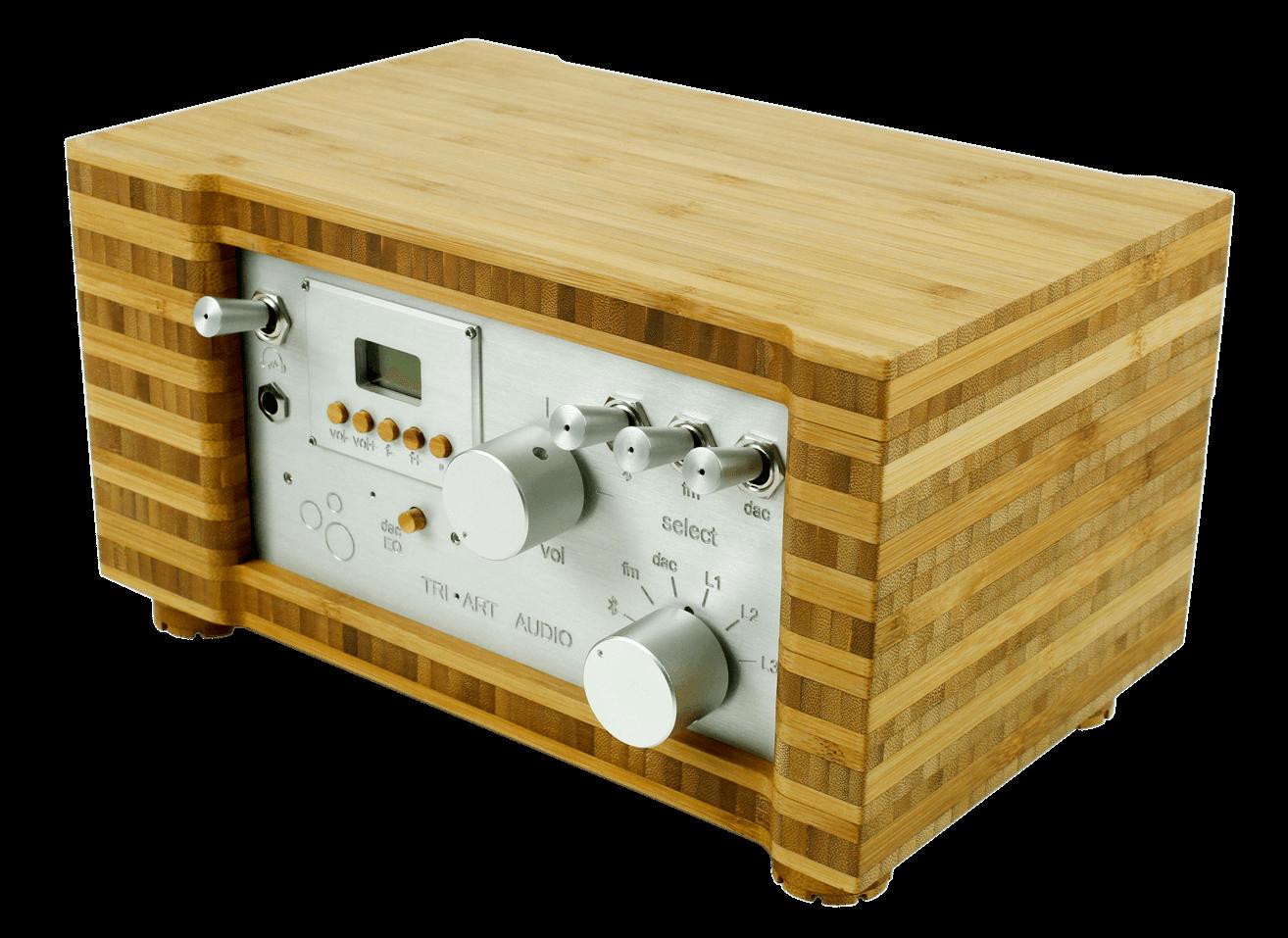








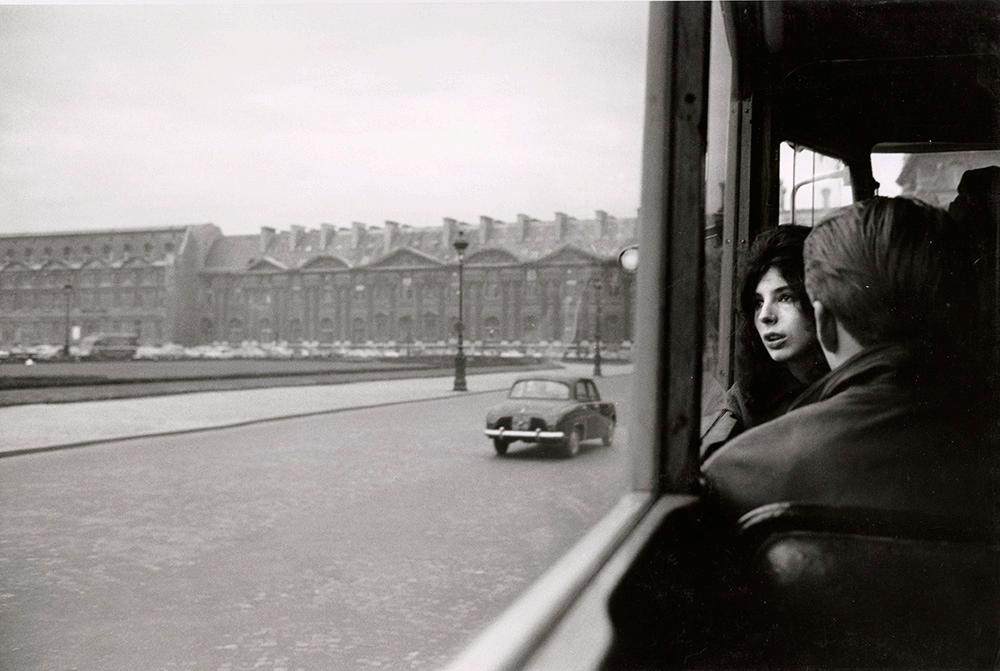










central button powers up the device with a long click, while the left flanking button selects input and the right switches conversion modes. More on that last one in a bit.
MUSICIAN Audio has the PEGASUS situated in the middle of their DAC line, with the $3,199 Aquarius at the top, and the $749 Draco taking up the rear. All three utilize an R-2R architecture. They also share a heavy duty construction and chunky aluminum
casework, a very positive selling point for the product. The build quality is excellent, with PEGASUS having enough heft to stay in place even with those weighty audiophile interconnects and power cords we all love. PEGASUS eschews the standard monolithic oversampling DAC “chip” or integrated circuit, widely employed by most manufacturers, in favor of an “R-2R” architecture made from individual parts. Don’t worry about the extremely high tweak factor, but basically R-2R refers to a particular "resistive ladder" design, a symmetrical ladder–like string of parallel and series–connected resistors acting as a binary decoder. As you may remember, binary arithmetic is the language of both computers and digital audio and, in the case of an R-2R ladder, each “rung” decodes one bit. A 24 rung ladder handles 24 bits. This seemingly simple design choice can, when realized with fancy, precision resistive elements, convert digital audio input signals into a representative analog output. As with everything where both digital and analog are concerned, the devil is in the details. Generally, an R-2R design trades off linearity for a lower noise floor. In the case of PEGASUS, they address linearity or distortion shortcomings with a digital corrective. We’re not talking some sort of GI tract tonic, this remedy consists of computer code executing on a special chip, an FPGA or Field–Programmable Gate Array. FPGAs are


 Tamara de Lempicka - Labios Rojos Impresión
Tamara de Lempicka - Labios Rojos Impresión
appears on the PEGASUS as an HDMI connector, I left that for a future review of one of MUSICIAN Audio’s protocol converters. Likewise, I discounted the AES inputs as USB is more likely to be used and far more difficult


reconstruction or anti–image filter to have an ultrasonic resonant frequency. This, in turn, means that in the range of frequencies we can hear, the amplitude and phase response are better behaved. Less ripple or amplitude

variation combined with less temporal or phase distortion.

I have always considered oversampling in a DAC to be a bandaid obscuring poor filter design but, like most aspects of audio, it really comes down to taste. No high end DAC designs that I know of feature user–selectable oversampling, it is solely the domain of entry and mid–level products to either offer choice or, as I mentioned, to provide alternative voicing. In more costly designs, the engineering team voices the product, creating a filter that most closely expresses their idea of perfection. With all DACs, a large contributor to the overall sound is the crucial reconstruction filter. With discrete oversampling designs like MUSICIAN’s, that’s doubly true. In oversampling mode, you really are listening to their filter’s behavior above all else.


The PEGASUS front panel has a red LED to indicate non–oversampling, while in oversampling mode the LED is extinguished. Switching from non–oversampling mode to oversampling, the midrange recedes a bit while the soundstage shrinks slightly. Also in oversampling mode, the “detail” increases, while slam becomes less potent. I placed quotes around that adjective, as the apparent detail, at least in the PEGASUS implementation to my ears, was slightly off–putting and verging on harsh. Subjectively, it
was as though some fairly aggressive lower treble boost had been applied. Though I’m all for equalization, and routinely use it to voice my speakers and headphones, I don’t want my hardware to have an EQ character baked in. Again, your milage may vary and, with a dark, single driver full range speaker or vintage
hollow state amplification without an extended high end, then this option may be just what you’re looking for to bring some crispness into your world.
Okay, back to non–oversampling mode and listening… I started with Aimee Mann, one of my perpetual favorites for her writing and performance talents. Her 2012 Charmer release [44.1 Qobuz] is an artful collection of evocative compositions clothed in hooky frocks. The title track combines a sawtooth synth intro with straight up rock percussion and requisite guitar foundation. With PEGASUS magically turning numbers into actual music, the acoustic space around the drums, the keyboard, the particular guitar signatures and Mann’s distinctive lead are all rendered with their individuality intact.




manner, with a humanly scaled piano and trap drum kit, accompanied by upright bass and countered with tasteful parallel flute lines. PEGASUS painted the scene with a mellow, smooth flowing brush. Also in a jazzy vein, up and comer Samara Joy’s 2022 album Linger Awhile on Verve [96k Qobuz] gave me a glimpse into sadness, disappointment and betrayal with Elisse Boyd’s lyrics of philandering spouses. Guess Who I Saw Today is a justifiably stripped down quintet production, spotlighting Joy’s rich and sonorous vocal style. The warmth of PEGASUS’ voicing nicely complemented the relaxed, trad stylings of Joy and her backing musicians. Watch for great things to come from this artist.
Given the right material, PEGASUS takes wing, soaring aloft with hoofs pawing the air and glinting in the sun. As an example; a “lowly” Red Book (44.1Khz) recording of the Royal Concertgebouw Orchestra’s 2018 release Dukas’ L’Apprenti sorcier on Decca Eloquence [Jean Fournet –The Concertgebouw Recordings, 44.1 Qobuz]. This prehistoric recording, dating from 1959, is a big, bold document with a soundstage to match. Even at a baseband sample rate, the percussion has sparkle, the brass is properly brash, and the strings lush not strident. Compare that to a 2022 release, Alpha Classics’ Handel: Coronation Anthems [96k Qobuz]. I was amused and delighted by the 2021 performance and Hervé Niquet’s direction but disappointed by the production, which conveyed an image of a miniature orchestra and chorus of Barbie–sized singers playing from afar. I’m not familiar with the venue, the Philharmonie de Paris but, through the MUSICIAN Audio converter, the wet, distant rendition was in startling and sad contrast to the fifty year old recording, even at less than half the sample rate!
I wanted to offer not only a different genre as example but also one that benefited from oversampling. Take last month’s release of Three Sides of One [96k Qobuz], a lively and melodic prog metal romp from the Show Me




unbalanced outs, but still it wasn’t a fair fight. The e22 lifted a scrim obscuring inner low amplitude detail, while expanding the soundstage dramatically. By the way, for all these examinations I used balanced outs directly from the DAC under test to my JC 5
lack of clarity called to me for a bit more…bite. This is, after all, by its very nature supposed to be a pugnacious piece, so I pushed the magic button for oversampling and was rewarded with the extra sizzle I was hoping for. So there, I laugh at my own audiophile smugness! Once I had a handle on the sound of the PEGASUS, I thought it would be sensible to conduct some comparisons. At half the price, the AKM version of Geshelli’s groovy little peekaboo JNOG2 DAC (AK4493 for all you tweakophiles), was an instructive listen… I found the fundamental takeaways to be a slightly narrower but deeper soundstage with better focus of transients. This was in keeping with AKM’s design choice that retains low amplitude linearity. The JNOG2 AKM edition lent a pleasant increase in crispness, though far from the macho version that the PEGASUS provides in oversampling mode. At the bottom end of things, the JNOG2 exhibited a tighter low end with less slam than the winged PEGASUS. My guess is that PEGASUS’ more beefy power supply is responsible for the heightened grunt factor. On the other hand, how would the PEGASUS hold up against my reference DAC at about double the price? The exaSound e22 Mk. II has only USB and AES3 ins, with balanced and
The $1-2k market segment for DACs is a crowded one with some very capable contenders, so I would definitely listen rather than reading before landing on a final purchase. That said, the PEGASUS represents a solid investment in mellow digital audio conversion. The overall careful construction, effortless ease of use, plethora of input choices and ability to upgrade the performance via I²S all make for a compelling package.
PEGASUS R–2R DAC $1099 Baiyun District, Guangzhou City Guangdong CN +86 20-39293669 https://www.musician-audio.com/ US Representative: Audio Art Cable San Diego CA +1 619-417-3035 https://www.audioartcable.com/





One of the first things to do is to learn to accept and expect this Power to flow through everything you do~ Ernest Holmes
So many of us want to live a more creative life. Many of us have a deep yearning to express ourselves more creatively but have difficulty accessing our talents or knowing what we want to create. Inevitably, frustration sets in, and we conclude that we don’t have what it takes to make music, or art, or to follow through with our ideas. Our creativity eludes us. We begin to think that musicians, artists, innovators, and the like, are a special class of people, or even God-like. But
By Rain Jordan Painting by Rossetti
the truth is we are all innately creative, we are all God-like.

During our childhood, “the creative or divine child” within us is both imaginative and productive. Our creative natures are fully accessible and functional. Our imagination fuels our days with unbounded curiosity and timeless play. We are inspired to create almost continuously.
Arnold Patent, former attorney, author, and speaker on the nature of reality, writes, “We do not learn a talent, it is inherent within us. Moreover, each talent comes with the tools to express it perfectly. For example, if you have an artistic talent, you have all the skills necessary to express your particular art form in the perfect way. Julia Cameron, author of the bestselling book, The
“One of the first things to do is to learn to accept and expect this Power to flow through everything you do”~ Ernest Holmes
OUR CREATIVE NATURE, PART I
 Ralph Gibson
Ralph Gibson


, asserts that our creativity, much conception. She believes that we carry the imprint of our gifts, as well as their unfolding. She refers to this “stamp of originality” as our “spiritual DNA.” However, for many, early parental expectations, societal and cultural norms, and oppressions, slowly but steadily erode the ecosystem of our original, creative nature. Although, our creative capacity, our inner artist, still exists within us, it is buried under the weight and debris of the collapse of our childhood Eden. French poet and novelist, Charles A. Sainte-Beuve, wrote “With everyone born human – a poet – an artist is born, who dies young and who is survived by an adult.”
Not everyone suffers this fate but far too many of us do.
There have been many times that I’ve cried or have been moved deeply while listening to music, or looking at art, or reading a poem, astonished by the beauty, originality, and profundity of the work, while simultaneously feeling the pain of my own unfulfilled creative potential. But how can we tap into more of our creative power, our spiritual DNA, as Julia Cameron calls it? Well, I certainly don’t have all the answers but very fortunately there are those who have gone before us. Those who have retained or rediscovered their creative talents and share them with the world. So, I thought it may be beneficial to glean some insight from the perspective and work of the

artist. I’ve chosen to explore the creative process of 3 uniquely different and immensely talented music artists; Ed Sheeran (singer/ songwriter, musician), Lizz Wright (songwriter/ vocal artist), and Matisyahu (singer/songwriter, musician). I chose music-makers mostly because of my love for music and for yours. I will offer a glimpse into their creative process, their inspirations, and influences in hopes that the beauty and originality of their creative genius reveals in some measure our own. However, it is important to note that there is a fecundity of art forms and ways to express our creativity. As well, there are many talented musicians and artists that never get signed to recording contracts or have their art displayed in museums, or perform on Broadway, etc. Mainstream recognition does not determine your identity or value as an artist, nor does your art form. We are all creators, all artists.
The only thing that seems to stand in the way of our creative expression is our willingness to love and honor ourselves enough to consciously engage in the creation process.
With that said, let’s look at the array of influences that inspire the artist who consciously creates. I will skip the accolades and awards to focus on, influences, inspiration, and creative process. We will take a peek at Lizz Wright in Part 1 of this article and Ed Sheeran and Matisyahu in Part 2, in the next issue.
Lizz Wright is a singer/songwriter with the remarkable talent to effortlessly move between genres. Her roots and identity are grounded in gospel music, yet jazz, blues and folk are as natural as gospel for her. Born in 1980, in the small town of Hahira Georgia, she grew up singing in the choir where her father served as a minister. She studied opera and music at Georgia State University and starting in 2003 to present has 6 critically acclaimed albums. She was signed to the Verve label when she was 23 years old and completed four albums there, and two on Concord Records. And one live album
Lizz Wright’s distinctive style and rhythm are in good part influenced by the culture and land of her southern Georgia roots. “There is a roundness to the way people talk, and the way they walk, you can see it, people sway, we can’t walk straight and keep it all stiff. We can’t do it”


says Lizz. I’ve personally seen Lizz perform live twice. She has one of the most uniquely beautiful and expressive voices I’ve heard. With mind, body and soul, she sanctifies each song she sings. And her timing, the empty space between her phrasing, is as reverent as her voice. Her gospel heritage and southern grace is her very essence. Other important influences include her renditions of early- 20thcentury American jazz standards and her touring tribute to Billie Holiday as she began to make a name for herself. Her musical influences include acoustic folk songwriters and musicians Jeff Buckley, Damien
Rice (Ed Sheeran’s hero as well) and Tracy Chapman to name a few; jazz greats such as, Shirley Horn, Billie Holiday, Nina Simone, Abby Lincoln, Gregory Porter, and many others.
Lizz Wright’s creative process is as organic as her distinctive rhythm and vocals. When asked about her performance of the jazz standard

“The Nearness of You” written in 1938 by Hoagy Carmichael, she described her performance and approach this way, “There’s so much great energy between the song itself and all the history it carries, all the voices that it’s held…and the gathering of people in the room. They have a beautiful electric charge of their own. I just get out in the water. I literally push the boat out and hop in. I have my body. I have my memory. I have my relationship with these lyrics. I have my imagination. There is so much that has gone before me in this song, so much to move inside of, that when I sing it, it doesn’t feel like it all has to come from me”. Her improvisational stance allows her to yield to all the elements that she senses in the moment. And when she talked about her performance of the Jimmy Van Heusen and Johnny Burke standard “Like Someone in Love” she said, “I’m fascinated with how other singers open up words. Everyone does it differently and makes the phrase blossom in a different way, a different color. I am also fascinated with singing it back to America, I feel like there’s something in that, like a healing recognition that kind of takes care of itself.” She goes on to say” “I feel like the words end up directing me and I try to let them open. They kind of push me.” Lizz Wright sings like a painter, as she literally explores the different timbral qualities of her voice in real time, says Peter Quinn of Jazzwise. As well, Lizz Wright, uses visual art to inspire her music. She believes that learning to see or look at the
“world” like an artist is a gift that helps her to understand what it is she wants to convey with her music. For her, the art of songwriting and singing is to treat the lyrics and story as colors and different materials to capture the light or the essence of her music. Her live rendition of “Seems I’m Never Tired of Loving You” is a beautiful example of this. Liz offers us her purpose or motivation for her work when she tells us, “I don’t know why else we would make art than to explore our humanity. It’s not all about ourselves. If you don’t leave here having learned or made something of who you are, I am not really sure what we’re doing”.
From an interview with Peter Quinn, Jazzwise 2020.

 Claude Monet - Houses_on_the_Achterzaan
Claude Monet - Houses_on_the_Achterzaan



Welcome to our 3rd Annual Best of the Year Awards issue. It has, without doubt, been our most difficult selection to date. There have been some truly wonderful discoveries and some incredible music made. Had not our traditional cut-off date for inclusion been the September issue, it would have been more difficult, still. Suffice to say, that there are some impressive products in this issue both reviewed and the award winners, of course.

In this respect, my research and curation of products for reviews are certainly to blame for the selection difficulties. Why bring a product in for review that is not quite up to snuff? Though when research/curation does not go as planned and the components is, well, not up to standards, we simply send the product back unreviewed and unmentioned. Why write bad or flaming reviews? That, apparently, is not our karma.
There are several categories of Best of the Year Awards—Editor’s Choice, The Best Product of the Year, Best Budget Products of the Year, and Best Products of the Year. Though based upon two products reviewed this year and a previously reviewed product, it was necessary, no, imperative to institute another award category— the Breakthrough Award
The Breakthrough Award was created to recognize those products that have ‘broken through’ the musical and technological barriers of high-fidelity, audio reproduction. To go a bit further, this

award symbolizes a profound leap in unparalleled performance, for a product in a given category or sub category that places it without peers, seemingly, at any price point. It should be firmly stated ‘for the time being’ as technology continues its march forward. And lastly, the award knows no September boundary and, to the degree that it exist and has not been recognized among our prior awards, it will be brought forward.
Only three components have received the Breakthrough Award Two are headphones—one an electrostatic headphone and one a planar magnetic headphone—and the last product is a DAC. Each of the products either has no direct peers or, in the case of the DAC, performs at multiples of its price point and often embarrasses the much more expensive DACs.
You will find brief write-ups for each of the various products, with the exception of the Breakthrough products, in the Best Products of the Year section. Their will a link to each of the products full review.

Ah, one last thing, the products within a given ‘Best’ category are all ‘A+’ products, if they have made it this far.

 Wassily Kandinsky - Murnau, Burggrabenstrasse
Wassily Kandinsky - Murnau, Burggrabenstrasse



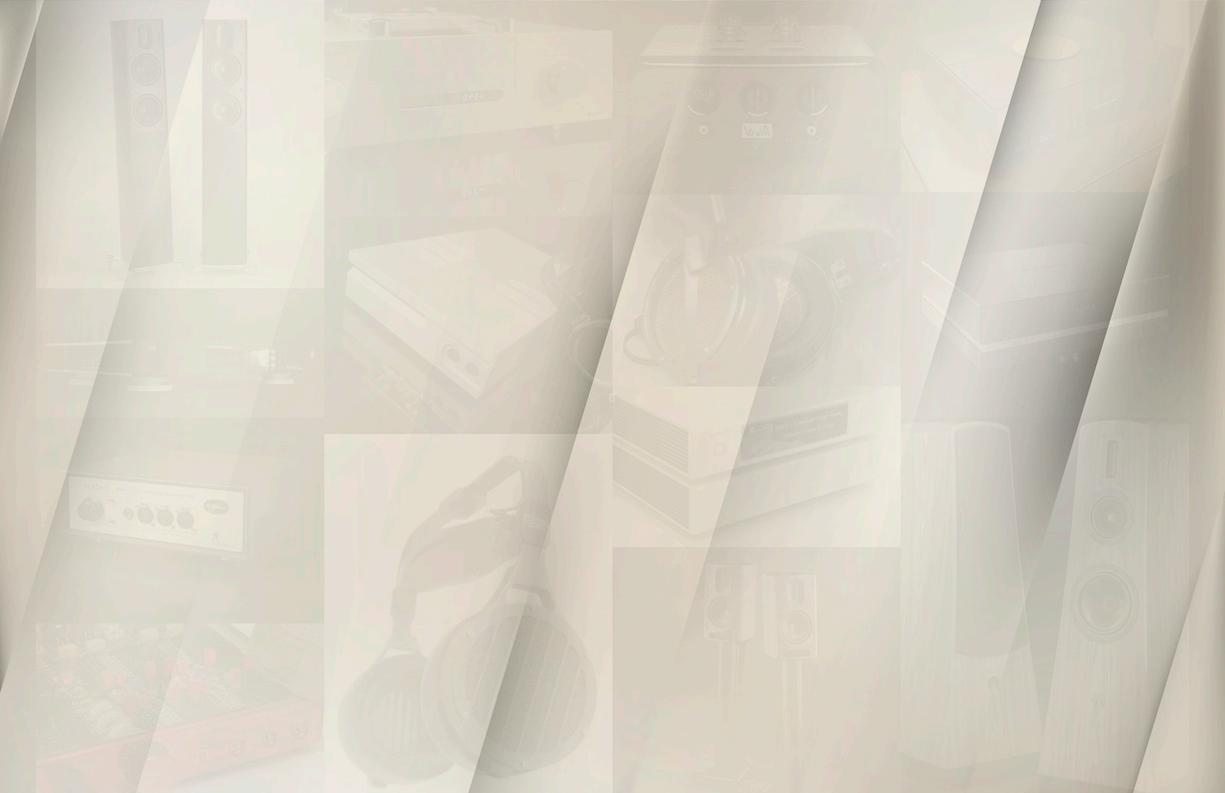









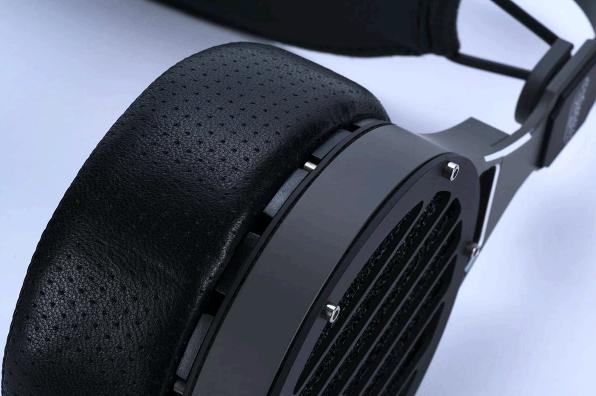












 Wassily Kandinsky - Winter
Wassily Kandinsky - Winter














 Claude Monet- 1871 Boats at Zaandam
Claude Monet- 1871 Boats at Zaandam







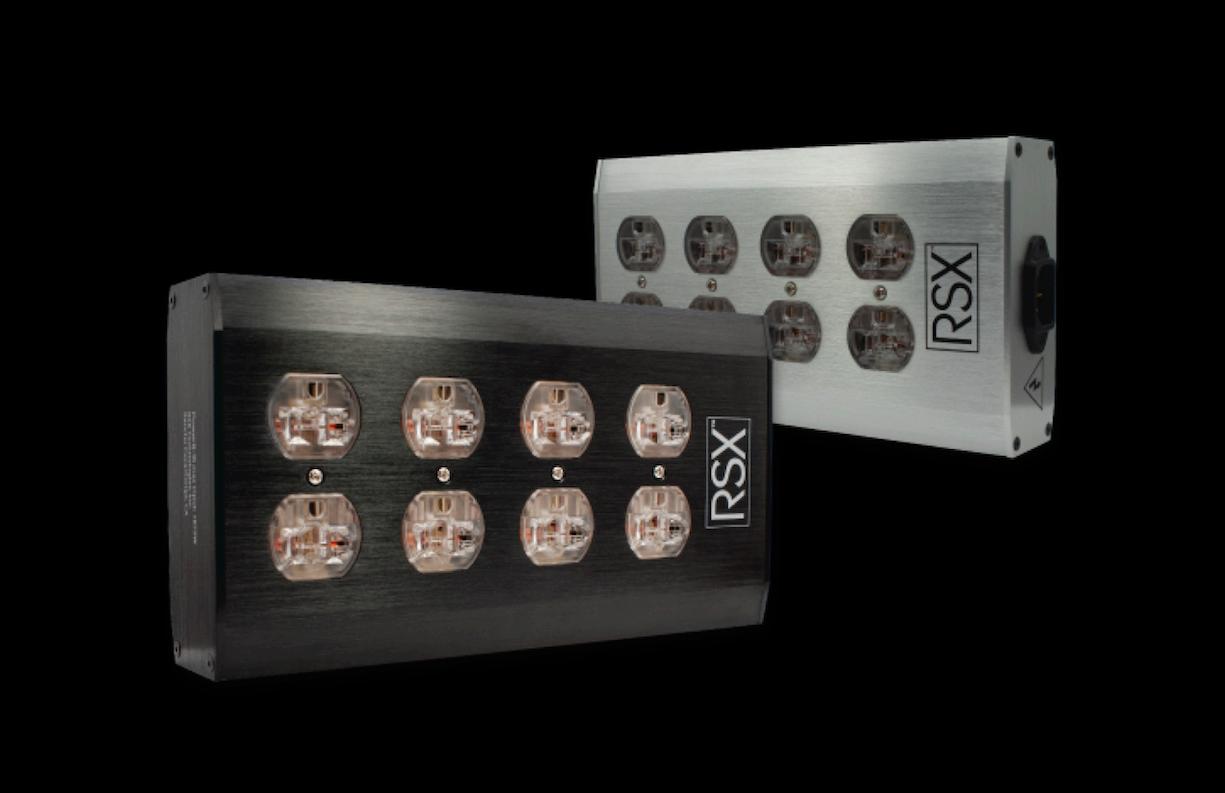








 Paul Cezanne - Still Life with Apples
Paul Cezanne - Still Life with Apples





The Schiit Freya+ gets our highest recommendation. For $899 you get a triple mode line stage, with a 128 stepped attenuator, rarely used but beautiful sounding 6SN7 tubes (new production Tung Sols to boot) and a nice metal remote control. The Freya+ with the design changes noted above, only commands a $100 premium over the original Freya, which is amazing.. If you have no desire for tubes, the Freya S is available for less.












The Clarus Audio CODA is by far the most transparent and highly resolving USB DAC/Dongle that I have had the pleasure to review. It continually frees a wealth of information across the entire frequency spectrum—bass, midrange, treble—with great abandon. And yet the CODA is imminently musical, rich, textured, never harsh. The CODA renders a soundstage that can be quite cavernous when called for and also quite intimate. From bass to midrange to treble the CODA is transparent, musical and its overall performance far above $299.

The RSX Power8 clearly holds to the dictum, “Do no Harm,” to the system in which it is being utilized. What it, in fact, offers is pure, clean power, a testament to the meticulous parts selection, research, and conscious minimalism all employed in its design. The results are a greatly lowered noise floor, transparency, a wealth of dynamics, freed detail. And at the RSX Power8’s price point—$429— suffice to say, that it has no competitors at 3 to 4 times is cost.







Disinterested in ostentation, Geshelli Labs believes in real world pricing with high fidelity performance. Their JNOG2 plus ERISH2 are a petite and potent bargain. With just enough character to put flesh on bone, the classy little twosome sets your music free without excessive color or dispensable features. Yes, you can spend more, far more, and will receive a tad more transparency or a huge clot of “character.” I recommend that instead, you opt for the glow of tiny LEDs and lovely, very affordable sound.




Astell&Kern SE180 $1499. A DAP that travels and that does not leave one yearning for one’s home-based desktop or even one’s HiFi system! I would have thought the SE180 the Astell&Kern TOTL DAP when judged by its abilities, but it is not. Are those above it that good? Or does the employment of new technologies in the SE180— TERATON ALPHA Audio Technology and Astell&Kern’s Next Generation AMP Technology—push it beyond them?


…









Absolutely gorgeous in aesthetic, prodigiously musical, mesmerizingly transparent, offering an immensity of soundstage second to very, very few. And then there is its beguiling camphor wood aroma, that rises from its hardened Seahorse case that entrances the senses. The collective experience is, perhaps, what sailors might have encountered in their ensnarement as they listened to the otherworldly voices of the Sirens en route to home or plunder. … I had heard and read good things about the ZMF Atticus, but I was not prepared…








The HeadAmp GS-X Mini ($1,795-$2,175) offers up prodigious detail, and resolves beautifully with a richness and natural warmth that are both beguiling and compelling. It has one of the best dynamic ranges that I’ve come across at its price point. And, as I stated above, though there are better headphone amps, they come at multiples of its price. There are few of which I am now aware at anywhere near its price, or even at double its price that can compete.





The DENAFRIPS Pontus II’s ($1,700) talents are prodigious and when its price is considered, relative to the incredibly expensive DACs and the way-over-the-top, incredibly expensive DACs, it is, decidedly, in the mix and on stage with the best and a giant killer! …The Pontus II is a champion of resolution and detail, a champion of dynamics, transient speed, and staging, and a champion of a realism and musicality… that is so engaging, so texturally and tonally rich, as to present a rather mystifying conundrum.

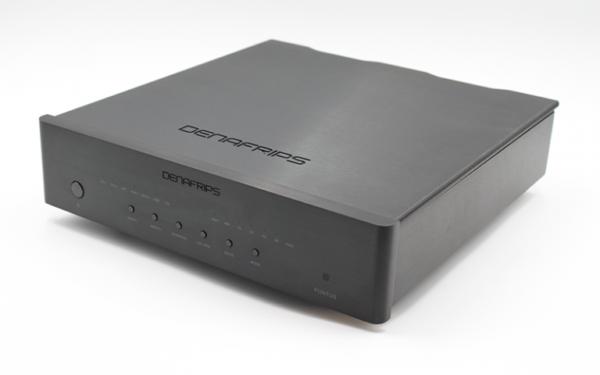



 Wassily Kandinsky - Autumn Near Murnau, 1908
Wassily Kandinsky - Autumn Near Murnau, 1908







ZMF Véríté ($2499.99) Gorgeous. Incredibly transparent, resolving, detail rich, fast, fast, fast, and astonishingly musical. The sum of the Véríté’s talents speak to something other than a dynamic headphone, something imbued with a good measure of the planar magnetic tribe, and, at times, the electrostatic tribe as well. An exceptionally talented chameleon able to meet the task at hand with all its best skill forward!












The Aurorasound HEADA headphone amplifier is musical from ‘Square One,’ ‘Jump Street,’ ‘Scratch’ or, practically, as soon as you turn it on, though it gets worlds better, thereafter. A beautiful heirloom, endgame piece to pass down. Solid state dynamics, resolution, detail and married to tube liquidity and musical bliss. What more could you ask for? If you’re looking for an endgame headphone amplifier and, perhaps, your amplifier is even more expensive, try this one.

The Spendor A2 is one of the most delightful speakers I have had in my system. In fact, I have not heard speakers I have enjoyed as much at this price point, other than several Magnepan models. Magnepans, however, do require more set up consideration, and plenty of amplifier power. The A2, in contrast, is very easy to integrate into virtually any appropriately sized room, and will pair with any high quality amplifier over 25 wpc.







W ow! I’ve just come upon a headphone—the ZMF Atrium ($2,499)—that bridges three separate headphone technologies/worlds in a single form. And not in a slipshod fashion, given that it rises to TOTL status across all three worlds and at nearly half to one third the cost of the reigning TOTLs. Further, it does all of the above while being absolutely gorgeous. …The Atrium’s abilities are without question, and to date it is without a like competitor that can so successfully and easily bridge the three technologies/worlds.








A s mentioned above, the MEZE LIRIC ($2,000) is, in many respects, a synergistic coupling of the traits of its pricier siblings, each distinct in its own way, and its less expensive siblings as well. And thus Meze has superbly synthesized these various elements within the LIRIC at a price point that puts it at the center of the family







line and with a voice all its own.The LIRIC’s combined traits will challenge not only much more expensive dynamic headphones but planar headphones and, perhaps, an electrostatic headphone or two. The Meze LIRIC is an easy GOLDEN KEYNOTE award winner for all its combined talents—its ability to capture the listener…




AMP-23R ($5,500) Can exacting, yet minute changes make a world of difference in the sound of a given component? Yes, and the results, in this instance, are stunning! Soo In Chae has been on to something and in his latest iteration he moves his creation ever closer to perfection in small, measured, short-signal-path steps. … A form-follows-function, minimalist, pragmatic, industrially-designed component, that is exceptionally transparent, natural, superbly musical, and fantastically involving.









Looking for a high performing loudspeaker with a sophisticated air and a small envelope? The Danes have a way with transducers, and the folk at Scansonic HD may have just what you’ve been searching for. Scansonic HD’s MB2.5B is the little black dress of loudspeakers; it works well with every genre in intimate environs. An affordable price and dapper design sets the MB2.5B apart from most of the boxy competitors and, with its deep diving low end, truthful midrange and silky top…








The Scansonic MB1 B standmounts are the best monitors we have heard to date under $3000, by quite a large margin. In fact, when my Spendors eventually have seen better days, the MB1 B will take their place. They are refined, addicting to listen to, and are lookers to boot. The optional stands work beautifully with the speakers, and even improve them visually, but their cost may give some pause, but they are very nicely made.







The DENAFRIPS Terminator II ($4,500) checks all of the required music lover and audiophile boxes easily and well and is a prodigious talent, especially when its price is taken into account. DACs within its ‘ambient’ pricing circle should take pause and perhaps never agree to a side by side comparison, lest they suffer a humiliating defeat. The DENAFRIPS Terminator II extends the price to performance ratio a great deal more than anticipated and performs far, far beyond its price point.





The Meze Empyrean Elite ($4,000) appeared to pierce the electrostatic sphere time and time again, as its transparency would lay bare microdynamic and spatial cues, air and ambiance, while finely parsing instrumental timbres and textures, together with a natural


tonality that I had not believed possible of planar headphones. And then there was its layering and transient speed, the entirety of which separated it clearly from its sibling, and its sibling from its former flagship status and it itself, to a larger degree, from all other planar headphones.









 Vincent Van Gogh - Trees
Vincent Van Gogh - Trees




The STAX SRM-T8000 ($6,000) is, decidedly, the TOTL of the STAX energizer line, as it incorporates all that its siblings do, in terms of transparency, resolutions, transient speed, etc. and on a level far above them all. The SRM-T8000 is an apex musical component that ticks the boxes across, well, all relevant parameters and then provides a near transcendental listening experience. At least, it did so for me. In truth, I was not prepared for the leap in performance that the STAX SRM-T8000 offered.











DidI mention how extraordinarily immersive the STAX SR-X9000 ($6200) is? Well, you will experience the sounds, the emotion, the ambiance, the ease, and even the ‘sights’—silverware and dishes clinking, the muttered voices of the inconsiderate, a waitress taking orders, muffled coughs, miscues, etc. It will all seem tangible and will be incredibly new to a great many. It was new to me and I have ‘mad’ years and much experience in this hi-fi thing. One listen.


The Audio Hungary Qualition X200 ($6,550) is in our estimation a highly successful product, and even more so when taking into consideration it’s price point. You get a heck of a lot for $6500. Along with high grade workmanship, a slew of welcomed features like built in Phono, headphone amp, subwoofer outputs, remote control, and more, make this a well thought out package. There is plenty of wattage to drive even power hungry speakers Then there is the sonics.











The Alta Audio Alyssa is an exceptional loudspeaker in every way if you covet true to life imaging, authentic texture, and genuine, foundational bass without compromise. If one can do them justice spacewise, and you are the type of listener who appreciates coherence and natural musical expression, these are a must audition. Michael Levy and Alta Audio in our estimation have a class leading product on their hands. We can’t think of another two way monitor at its price point we prefer.


T and single-ended triodes and it is sublime in the extreme. In many ways the H1 moves beyond even its top competitors, as the synergy of its ‘talents’ enable the transcendence of its like priced competitors and draws it to near parity with those peers priced far above. Did I mention the Trilogy H1’s blazing, transient speed, its outstanding transparency, its hypnotic immersiveness and delicious tonality? Yes. Well, okay.












BlueHawaii SE Electrostatic Headphone Amp $7,995. Our highest award—the DIAMOND AWARD—goes to the Blue Hawaii Special Edition electrostatic headphone amplifier. It is truly the synthesis of an exceptional electrostatic/dynamic headphone amplifier, and may well become an endgame component for many a headphone fan wellversed with the electrostatic world (or not) and who loves music to no end. Perhaps it should be no wonder why electrostatics in general come away with so many awards.

 Paul Cezanne - Still Life with Peppermint Bottle
Paul Cezanne - Still Life with Peppermint Bottle

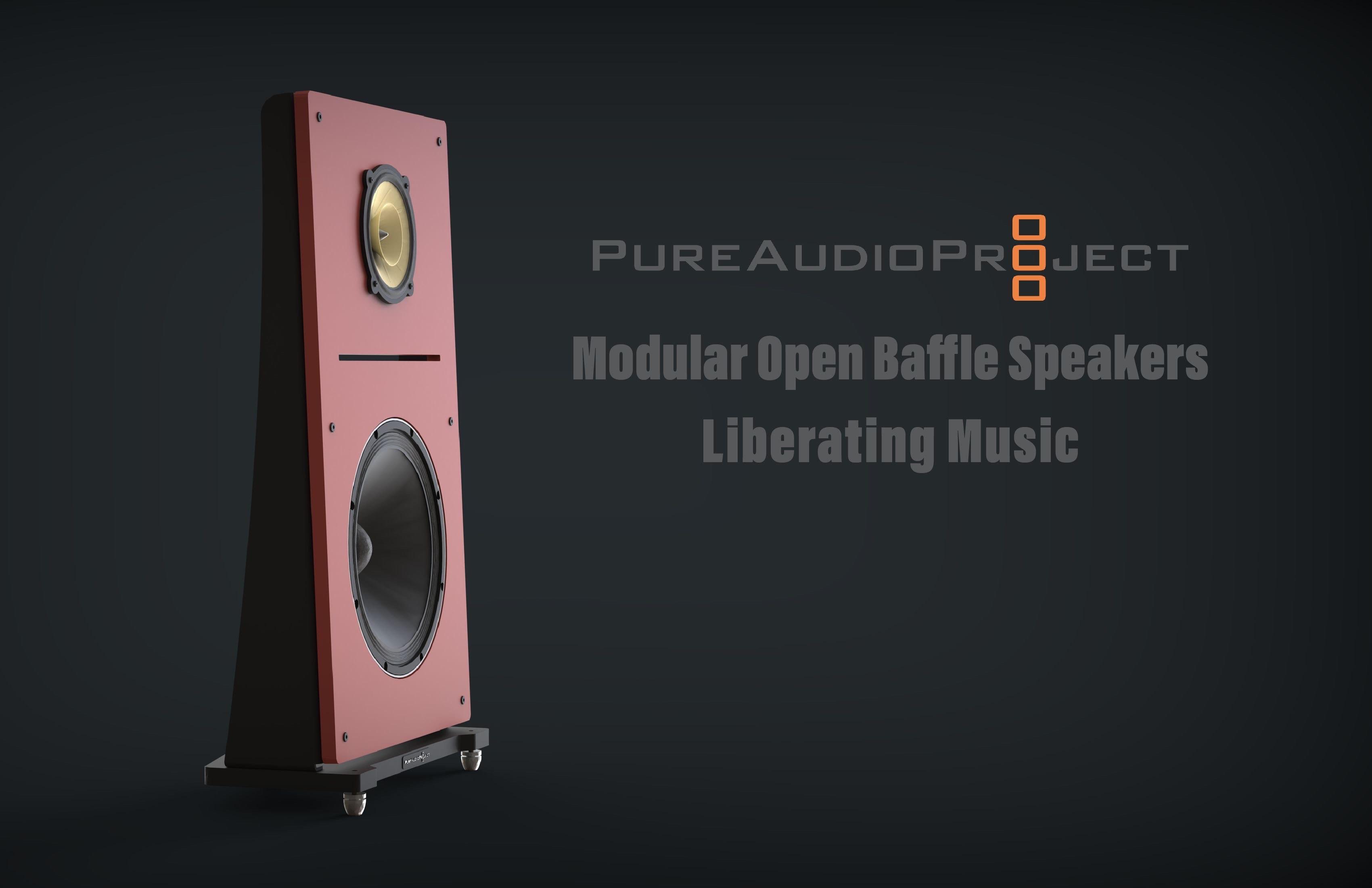

T he Bricasti Design M1SE ($15,000) is, indeed, the “The Synthesis of Transparency and Beautiful Music!” Its abilities to extract nextlevel transparency on recording after recording, as well as its competence to resolve that which other DACs cannot is outstanding and










pedigree enough. But the M1SE does not stop there. There is a profound three-dimensionality, a richness, and a palpability generally associated with single-ended triode tubes. And in this respect the solid state M1SE is preternaturally engaging.


T here is, perhaps, no aspect at which the Grimm Audio MU1 ($11,400) does not excel across its functionalities and collective voices—both “better” and “best”. It is supremely transparent, easily able to resolve the most dense passages, movements and songs, and it lifts prodigious amounts of detail, most especially via its AES/EBU (4x) output. It is also natural and richly musical in a way that makes it compelling and immersive and fluid as if an analog rendering.












PerfectWave SACD transport and PS Audio DirectStream DAC ($12,498) Seriously, if you have a mountain of CDs like a number of my friends and consider yourself a connoisseur of media—CDs, SACDs, downloads—the PerfectWave SACD transport and the PS Audio DirectStream DAC represent a one-stop powerhouse that will keep you seated in the listening chair for countless happy hours with its transparency, its detail and richness, its startle factor, and its engaging musicality.





The Mola Mola Kula integrated amplifier ($13,500) is, to our ears, a state of the art in one box amplification solution. The rich midrange, the perfectly articulated and controlled bass, along with the amp’s overall grip on the music and speakers, makes it one of the






great integrated amps of our time, and we have heard a few. Add the absolutely superb, user configurable phono stage, and the state of the art DAC and streamer module, and you have a package that would dazzle even the most jaded audiophiles. As a bonus, it is captivating visually.


The Audience Front Row Cables (full loom: $24k+) pulled a very convincing electrostatic imitation on me in the sense that every scintilla of information—data, music—was beautifully revealed and noise was banished to some other distant, non-parallel dimension. Or, at least, it certainly seemed that way. The Audience cables distinguished themselves like the STAX SR-X9000 had done, which ultimately led to the SR-X9000 winning one of our highest awards for 2022. These cables are not inexpensive by any means…







“Y




ou-are-there” describes succinctly my experience with the Viva Egoista STX ($17,000) electrostatic headphone amplifier. And it is an experience that will not soon be forgotten. As mentioned, the Top-Of-the-Line STAX SRM-T8000 is not a contender, though at approximately one third the price, it shouldn’t be. It isn’t. As I write this, there is no competition for the Viva Egoista STX electrostatic headphone amplifier. Where that contender may come from has yet to be discovered…








Quite frankly, the Audionet WATT ($18,800) integrated amplifier is a stunning piece of audio engineering and industrial design. I tried to find flaws in its sonic performance to no avail. I did not get a chance to evaluate the optional phono board, but if it is on par with the amplifier, it is worth the additional grand. The final words we can muster about the Audionet WATT is that it is a gentle giant. It has muscle to spare, but distills its arsenal elegantly, using velvet gloves when needed, and bringing down the hammer when called upon to do so.




The Accustic Arts Player II ($22,500) rendering of CDs bested its streaming counterparts and even higher resolution versions of the same CDs(!) time and time again, regardless of genre. And this came as quite the surprise. It is also preternaturally engaging and immersive, alive, dynamic, incredibly resolving, and, at the same time, the doppelgänger of analog. This being no small task for a ‘digital playback’ component. And it serves, beautifully, two worlds—CD playback and streaming.







The Mola Mola Kaluga mono block amplifiers ($17k-outside components), at approximately 17 grand, deliver far more sonic goodness than their price indicates. Yes, 17 grand is a lot of money, but within the context of a market that gives us power amplifiers of all designs that are priced at many multiples of the Kalugas, these amps are


to be reckoned with… The Kalugas offer a clarity, definition and punch that will make most speakers sound just about their best. Of course, hearing is believing, so auditioning these amps with your speakers is a must. To these ears, the Kalugas made our Magnepans sound their very best up to this point.






 Claude Monet - Wheat Fields with Cypress
Claude Monet - Wheat Fields with Cypress


One of the Best Products of the Year and One of the Most Affordable!




 By Analog Audio & Roy Gregory
By Analog Audio & Roy Gregory

The movie soundtrack (or OST) isn’t what it used to be. That “O” has been dropped for a reason: these days movies tend to come with pre-packaged popcorn musical accompaniment, cobbled together from whatever chart hits are considered appropriate. Pulp Fiction wasn’t the first example but it was probably one of the best and it’s been pretty much all downhill since then. When a film like Wolf Of Wall Street is lauded for its soundtrack, you know that something’s rotten in the state of Hollywood. But it wasn’t always so: once upon a time, scoring movies looked like the promised land for a whole host of classical composers who’d been left high and dry as the tide of public taste retreated. Miklos Rozsa won Oscars for Spellbound, A Double Life and Ben Hur, while Eric Wolfgang Korngold won for The Adventures Of Robin Hood and Aaron Copland, Malcolm Arnold, Franz Waxman, Bernard Hermann and Dimitri Tiomkin all feature on the list of winners. In 1954 the nominations list consisted of the winner Tiomkin as well as Max
Steiner, Larry Adler, Leonard Bernstein and Waxman! They don’t make ‘em like that any more...
Yet, since the mid-90’s it has become a vanishing art. Barely a year goes by without John Williams, John Barry, Hans Zimmer or all three featuring on the nominations list (sometimes several times) and while the Oscars are certainly not universal indicators of quality, it’s the films that win that are worrying – or more importantly, the films that don’t. Big boxoffice and great scores are becoming increasingly rare bed-fellows: it’s just so much easier to grab a bunch of ready made pop tracks and pay the royalties – besides which you might even be able to spin off a hit and boost the gate that way – normally with a chart single that has nothing to do with the movie itself and just plays over the end-credits.
All of which has allowed the OST to fall from view, which is a shame because there’s some fantastic music been written and arranged for the movies – if you know where to look.
You Might Not Own, but Probably Should
FUTURE PAST
Indeed, just recently there have been signs of a revival – in quality at least – with wins for The Artist and this year, Gravity. There’s no denying that great music makes for a great movie, with Gravity being a particular case in point, but the nature of the medium means that it’s also prone to magpie tendencies, often weaving familiar themes or material that was contemporary with the action into a single atmospheric whole. The first rule of film music is simple: “If you are going to steal, steal from the best.” Just ask Hans Zimmer and John Williams – neither Star Wars nor Gladiator would have been quite the same without the influence of Holst’s Planets. In fact, film scores are so often marriages of musical convenience that their motto might well be, “something old, something new, something borrowed, something blue”.
Throw in the fact that sound tracks (at least in their original form) don’t need to take the constraints of airplay or domestic audio systems into account and you’ve got recordings that at least start with the sort of dynamic range that gives them a real chance of dramatic intensity and musical impact. Which brings me to my own personal list of favorite film scores, musical collages all. Leaving aside the obvious and done to death, here are five hidden (and not so hidden) gems that are well worth seeking out whether you’ve seen the movie or not. So let’s start at the beginning with the OST that kicked it all off, at least as far as this article was concerned – a worthy Oscar winner that dragged the musically inventive and
downright dramatic right back to center stage – or should that be screen?
 Gravity OST Stephen Price Silva Screen Records CD SILCD 1441 (2013)
Gravity OST Stephen Price Silva Screen Records CD SILCD 1441 (2013)
If you haven’t seen the movie, do yourself a favor and get to the cinema while you still can. This is a headlong adrenalin rush that needs to be seen 3D (yes, I know, I’m normally allergic to tricksy 3D effects too) on a big screen and without interruptions or comfort breaks. “Immersive” doesn’t even begin to describe this cinematic experience and a huge part of that is the music, a score that underlines the episodic nature of the action and steadily ramps up the tension, one notch at a time. In keeping with the “strangely familiar” environment of being able to see the earth but being distant from it, this music eschews the normal dramatics of more earth-bound action, eliminating percussion in favor of layered keyboard textures, juddering rhythms and
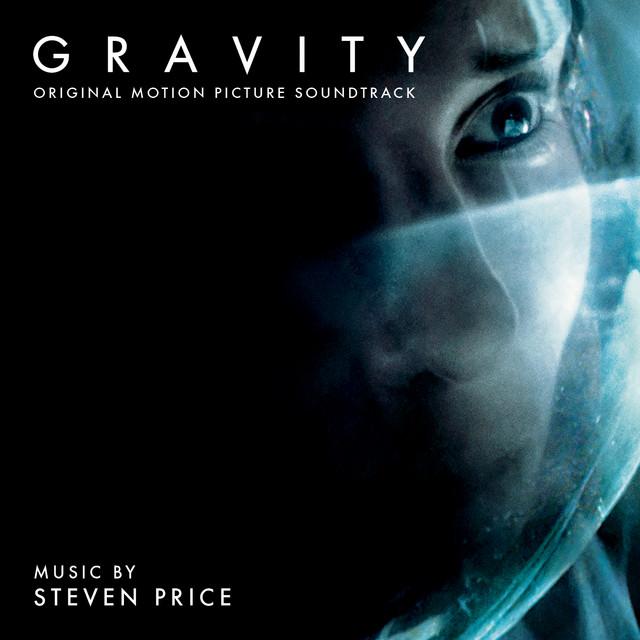
FIVE GREAT SOUNDTRACKS

soaring harmony vocals and strings. It’s a heady mix that allows Price to build massive slabs of heavily textured musical intensity that he kills with a heartstopping flick of a switch. Play this on a big system and those tracks fall off a musical cliff with all of the sudden finality of an air lock slamming shut. They literally seem to suck the air from the room. But it’s not all dynamic slam-dunks. There’s subtlety of pace and texture here to put many a classical masterwork to shame. While the whole album is consistently impressive there’s no escaping the dramatic tension and momentum that builds step by step towards the two final tracks, “Shenzou” and “Gravity”. These weld the whole atmosphere and all of the dramatic devices deployed in the previous 14 tracks into two shatteringly effective musical toboggan rides that will, quite literally have you holding your breath! Buckle up and enjoy: this music is quite a trip...
The Draughtsman’s Contract Michael Nyman Charisma LP CAS 1158 (1982)

This score for Peter Greenaway’s Draughtsman’s Contract is as enigmatic as the film it underpins. What appears at first as a comedy of manners soon spins out of control, the glib artist whose sharp-tongued observations appear to give him a positioned of superiority soon discovers that nothing is as it seems and the price agreed and what you pay differ in terms of currency and degree. This is all about the dark underbelly of polite society, the excess and moral turpitude hidden behind the airs, graces and good manners. Greenaway’s script seems to be an essay on class and sexual mores but is ultimately concerned with the vulnerability of women, their exposure through primogeniture and the desperate steps they (might possibly) take as a result. The lesson is clear, even if the plot isn’t: the more exquisitely cultured and mannered a society becomes, the deeper flows the violence and corruption.
Scoring a film that is at once an exaggerated period piece and a metaphor for modern political reality should present quite a challenge but it is one that Nyman meets with ease, creating music that complements the
action and appearance on screen to perfection, while also hinting at the deep-lying sub- text and the darker currents beneath the glittering surface. The score is highly stylized and built on themes drawn from the high-baroque music of Henry Purcell, but Nyman handles those themes in his own modern idiom, heavily repetitive and rhythmically insistent, yet woven around with complex undercurrents of counterpoint, the formal structures and contrasts the perfect metaphor for the movie’s dark happenings. The genius lies in the nagging familiarity of those themes, melodies and phrases that sound like they should slip effortlessly into something written by Handel that always gets played at weddings – yet not quite. Catchy, hinting at familiarity and yet disturbingly off- beat, the music captures the mood of the movie perfectly. The carefully structured thematic development proceeds with all the choreographed predictability of a period dance, yet somehow it seems to end up somewhere off the rails. Delightful, fascinating, entertaining and invigorating this is a luxuriously bijou taste of baroque music spun into a compact guilty pleasure. If you don’t know Nyman’s music, this is possibly the
easiest way in. If you try The Draughtsman’s Contract and like it, just wait until you hear what the Greenaway/Nyman creative axis does to Mozart in Drowning By Numbers...

Original music by Trevor Jones, featuring Courtney Pine, Saxophone Island Records LP AN 8709 (1987)
If The Draughtsman’s Contract swirls with hidden menace, Alan Parker’s Angel Heart is overhung by a brooding air of open malevolence, with increasingly frequent and unexplained acts of savagery, played out against a creeping shadow of deepest darkness. Mickey Rourke’s descent into a living hell is as graphic as it is inevitable, his insouciant manner no defense against the evil machinations that drive events, even the one ray of apparent innocence (played by Lisa Bonet in a postCosby Show change of direction that simply adds to the emotional impact of the role) ends up accelerating his demise, the final denouement as complete as it is inescapable.


Supplying music for anything this dark, violent and disturbing gives the composer plenty to work with and Trevor Jones seizes the opportunity with relish. It’s no mistake that music plays so well at the darker end of the emotional spectrum and this is as dark as it gets. A classic collage of original music and period tunes, the 30’s hit “Girl Of My Dreams” is pivotal to the plot and supplies a haunting, repetitive theme throughout, underpinned by other older numbers, performed by Bessie Smith, LaVern Baker and Brownie McGhee. But what really make this score are Jones’ own swirling compositions, overlaid by the sax improvisation of Courtney Pine: the hollow, church acoustic, the subtle use of atmospheric vocal backing and that ever- present theme. Haunting doesn’t even start to cover it, while snatches of dialog, including DeNiro at his most casually menacing, all help to conjure the movies darker tones, even when listening to the music in isolation. Angel Heart was probably Mickey Rourke’s finest hour – certainly until The
Wrestler – and the sound track is definitely the best thing Pine ever did, a forgotten gem that’s well worth seeking out.
Warner Bros Records LP 9362 48085-1 (1968) Was anybody ever as cool as Steve McQueen (the original – not the director of Twelve Years...)? Was Steve McQueen ever as cool again as his character in Bullitt?
There’s something indefinably ‘60s about Schifrin’s film scores, perhaps because they were so often imitated (but rarely equaled). By the time Bullitt came around he’d already provided music for McQueen’s downbeat Cincinnati Kid (as well as Newman’s Coolhand Luke and the theme for Mission: Impossible) but it was the San Francisco cop thriller with the car chase that was to set new standards. Although advertised on the sleeve as the motion picture sound track, the recordings here were actually laid down after the fact and differ from the ones used in the movie, the producers wanting a tighter, pop-ier feel for the album release. It was a decision that worked in the music’s favor and perhaps helps explain the way it crossed over into the mainstream. Schifrin went back into the studio
 Bullitt
Lalo Schifrin
Bullitt
Lalo Schifrin
with a stellar band including the likes of Mike Melvoin (who played piano and contributed the standout Hammond parts) Howard Roberts on guitar and Ray Brown on bass. The end results stand as a testament to Schifrin’s skills as an arranger as much as a composer. Whilst the music is so obviously of its time, it manages to escape both cliché and pastiche. Just when you think it’s all going horribly wrong and Peter Sellers is about to put in an appearance, a deft instrumental line, a phrase or switch in rhythm lifts you away from the expected and onto a whole new path.
The opening tracks capture the mood of the swinging sixties perfectly, but it’s the second side of the album where things get really serious. Opener “Ice Pick Mike” (surely the inspiration for every cop show theme tune for years after) is followed in quick succession by the ethereal beauty of ‘A Song For Cathy’ and the high drama of ‘Shifting Gears’, tracks that all stand the test of time and would happily stand alone. The piano steps center stage and its minor chords add an air of brooding menace to the glittering brightness of side one’s brass. The Burke/Webster composition “The First Snowfall” is the only track here not written by Schifren, but again he gives it a beautifully balanced arrangement, building on its lighter balance and deft flourishes to provide the necessary contrast with the main score. The final track revisit’s the main theme, its sparse guitar and rhythm core offering a slower, more mellow and reflective mood, in stark contrast to the upbeat tempo and
stabbing brass tuttis of the title piece. It’s a fascinating insight into the way a film composer can use a single theme but different arrangements to affect the on-screen atmosphere and emotional pay-off.

The decision to rework the tracks leaves us with a pop/jazz-suite that stands alone, redolent of the movie’s cool but making its own points along the way. There is some great music here and if it sounds familiar that simply reflects just how influential it was. Its place in history might ultimately have been eclipsed by the microcosmic perfection of the “Mission: Impossible” theme, but here you have the real deal. Incidentally, if you are interested in the differences between the film versions and the sound track recordings, there’s a 2009 doubleCD release from Film Score Monthly that contains both, although I’ve never actually seen a copy.
Heaven’s Gate David Mansfield
United Artists LP 1A062-83091 (1980)
When the virtually unknown Michael Cimino (with just one feature film under his belt) swept the Oscars with The Deer Hunter, Hollywood lined up to let him write his own check – with possibly predictable results. Ignoring the artistic issues with the sprawling, slow-paced Oscar winner (not to mention its politically questionable sub-text – at least as far as Hollywood was concerned) giving Cimino a free hand was to result in what was one of the most catastrophic financial disasters in movie
history, a movie that was long, late and massively over budget. From a then massive cost-base of $44 million, it only grossed $3 million at the box-office, a performance that virtually destroyed the United Artists studio. Cimino had broken every rule in the book, from extending shooting schedules, to endless retakes, rewriting history as seen by Hollywood (in this case, Shane) to employing unknown foreign actors. But worst of all, the movie was widely viewed as “un-American”. No wonder it bombed...

But like many things in Hollywood, that assessment was over simplistic and since then, the critical standing of Heaven’s Gate has slowly but surely been on the rise, until it is now seen in some circles as a maligned masterpiece. I’m not sure I’d go that far: for me it is more of a gloriously heroic failure. Overlong (the director’s cut runs out at well over three hours) and self indulgent it also contains some of the most stunning cinematography and elaborate set stages ever shot, all accompanied by a tenderly luminous sound track.
Keeping things in the family, Cimino employed (Deer Hunter and Heaven’s Gate) producer Joann Carelli’s partner David Mansfield to create and arrange the music, based on traditional themes, a task that Mansfield undertook entirely alone, playing and recording every note of every instrument. In stark contrast to the explosive bombast that typifies so many movie scores, with hours of footage to work with (Cimino shot over 220 hours of film) Mansfield’s music is gentle, almost languorous in its pace. Entirely acoustic, it’s traditional, middle-European roots and folk themes, beautiful use of rhythm and slowly building changes of pace give it a real, lasting quality – one that illuminated the movie as surely as it allows it to stand alone.
As beautiful as it appears on screen, Heaven’s Gate is also gut-wrenchingly lawless and violent – the West as it really was, as Cimino would surely have it. Which makes the delicacy and tonal beauty of Mansfield’s music all the more remarkable.
And While You Are about It... It seems almost criminal to exclude Messrs Williams, Barry and Zimmer from proceedings,

so if you don’t possess the following discs you should certainly give them a go:
past the main theme and there’s considerable range, delicacy and nuance...
Out Of Africa

John Barry
MCA LP 11327 (1985)
Simply beautiful melodies and arrangements that show just why Barry was considered a master of his craft.
The Thin Red Line

Hans Zimmer
RCA Victor HDCD 09026-63382-2 (1999)
More dramatic, less derivative and less bombastic than Gladiator, this shows Zimmer’s range to far better effect – and it will still shoot your woofers across the room if you let it!
Raiders Of The lost Ark
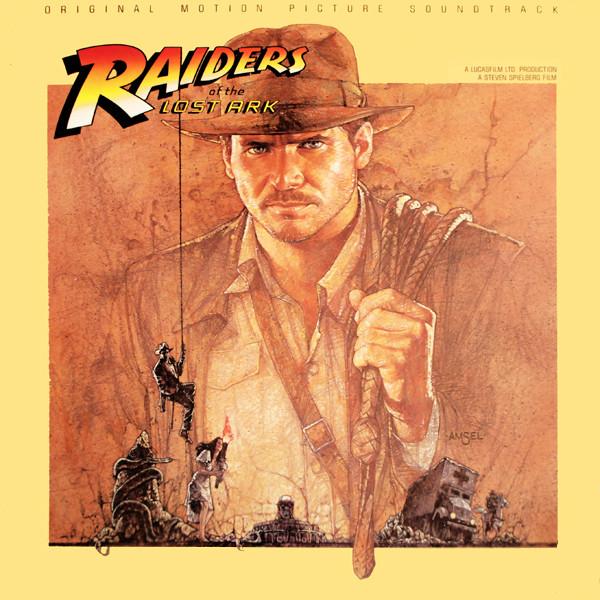
John Williams
DCC Compact Classics Double Album LPZ-2 2009 (1981/1995)
Spielberg and Williams and just as familiar as Star Wars, but this is so, so much better. Get
AKRM


 Imogene Cunningham
By Andre Marc
Imogene Cunningham
By Andre Marc


Legendary British high end audio firm

Rega Research has been on a mission to redesign and reintroduce their turntable line for several years now. It started back in 2016 with the revamping of the iconic
amplifiers, speakers, CD players, DACs, and cartridges. Several of their phono stages were reworked as well, and they have even marketed a complete entry level system called The Rega One, with a turntable, amplifier, and speakers. All Rega products are designed and manufactured in their factory in England from top to bottom.

P3 into the Planar 3. This was a complete retool of the table, improving parts quality, and addressing areas overall that could be improved. Rega followed suit by doing the same for the Planar 6, the Planar 8, and their reference turntable, the Planar 10.
Rega not only took a fresh look at their turntable line, but they also developed numerous new products, including integrated
We received the aforementioned Rega Planar 10 in for review, outfitted with the Apheta 3 cartridge. The Apheta sits right below the top of the line Rega cartridge, the Aphelion 2. The Planar 10 and Apheta 3 combination retails for $7895. The Planar 10 also includes a custom designed outboard power supply and speed control.
The Planar 10 comes equipped with an impressive ceramic oxide platter and their reference drive belt, along with their flagship RB300 tone arm. Rega has always been known for their tone arms, even supplying designs to other turntable manufacturers. The new, top of


 Pierre-Auguste Renoir - By the Seashore, 1883
Pierre-Auguste Renoir - By the Seashore, 1883
the line RB3000 was specifically designed to have the fewest joints possible, but with maximum stiffness where Rega thinks it should be applied. The tone arm is actually hand finished, with no paint applied to ensure low mass. In fact, low mass, and rigidity are


by 30 percent over the previous model, and also increased stiffness!
Another area Rega paid particular attention to was the subplatter: redesigned and coupled with the new main platter, this makes for a pretty impressive engineering feat. Rega uses advanced materials, and exacting tolerances ensure as much information as possible is extracted from your records.
essentially Rega’s guiding principles for turntable design.

Rega also strives to lessen the impact of vibration and resonances from an external environment. The use of a skeletal plinth is also in evidence, a feature likewise found in the Planar 8, the turntable one step down from the reference Planar 10. The plinth is very low mass, and very stiff. It is hard to believe, but Rega both reduced the mass of the Planar 10
A critical part of the Planar 10 package is the outboard power supply and speed control. It allows one to switch between 33 1/3 RPM and 45 RPM using front panel buttons. The speed can be adjusted precisely with a simple tool using the controls on the back panel. I was able to get the speed exact, as confirmed by several different iPhone apps designed to measure platter speed. The digitally controlled crystal oscillator is the nerve center. Lastly, internal resonance control for the PSU has been addressed as well.
Set Up & Listening: From unboxing to spinning a record, a total of 15 minutes was required. That is not a put on.

After removing all packaging, and setting the Planar 10 on a Symposium Svelte shelf, we only needed to put the ceramic oxide platter in place, balance the RB300 tone arm, set the Apheta 3 tracking force, and the anti skate. The last piece of the puzzle was adjusting the speed. We found that on taking delivery from the factory, the table ran almost exactly at 33 1/3 RPM, and only needed a very minute tweak.

Rega tables are internally grounded, so no extra ground wire connection is needed, there are no esoteric adjustments like VTA, or any other complicated items to worry about. Once installed in the system, we were very pleased with the finish and workmanship. One last area that makes Rega tables virtually care and hassle free is that they come with tethered, inhouse made interconnects. No lossy phono plugs to be seen.
The review system included a Rogue RP-5 tubed preamp, an Audio Research VS-110 power amp, Magnepan speakers, Audio Art and Black Cat cable, Audience and Bryston power conditioning, and Symposium rollerblocks. We also had in-house the latest version of the legendary John Curl design, the Parasound JC-3+ phono preamp, for a forthcoming review. Spoiler, the JC-3+ and the Planar 10 could not have been a better match.
With great anticipation, we put together a big stack of vinyl from varied genres and vintages, all ready to go. The first record we played was Low Spark of High Heeled Boys, the classic Traffic opus on Island records. To

say we were utterly smitten from the get go with the Planar 10 would be an understatement. Having played this record on too many turntables to mention, it was literally like hearing it with fresh ears for the very first time. On “Hidden Treasure” Steve Windwood’s vocal, acoustic guitar, along with Chris Wood’s gorgeous flute, seemed to come to life with texture and depth that were startling.
In anticipation of the upcoming deluxe box set which will feature 2022 remixes, we spun an original Capital pressing of The Beatles’ Revolver. This album was a watershed moment for both the Beatles and for pop music in general, and that might be selling it short. It features some of the first loops ever created with spliced analog tape, along with backwards tape effects, as heard on “Tomorrow Never Knows”, and then there is the horn section on “Got To Get You Into My Life”, and of course, the string section on “Eleanor Rigby”. If that were not enough, there is also the use of Sitar and Indian rhythms on George Harrison’s “Love You Too”. One can only imagine what listeners experienced in 1966.
This listener was so immersed in the sounds of the Revolver and the sheer lifelike sound the Planar 10 produced, that we spun the record three times, both sides, consecutively. We had never heard the bass and drums so locked in, the guitars as panned in their distinct channels, and the amazing presence of the vocals. We had several “pinch me” moments.

We then pulled out a very special stack, our recently procured original Island and RCA pressings of all five releases from legendary British progressive rock band Quintessence. We paid more than we like to for these albums, but they are not easy to find in good condition. We are very familiar with the Esoteric/ Repertoire CDs, which happen to be superb sounding. The Planar 10 brought the vinyl
the arrangements, the stunning vocals of lead singer Phil Jones, the exotic guitar interplay, and the flute and keyboard parts sparkled in the most organic way.
versions to a new level, allowing a much higher level of connection to the music.




Tracks from the debut album, In Blissful Company, the self-titled second effort, and the rest of the band’s releases, were simply ravishing, brought to life by the Planar 10 in ways we did not expect. The sheer majesty of
The Planar 10 was not “enhancing” or producing an artificial sheen on any record we played. One of our favorite obscure early 70’s releases is the self-titled album from Malo, a Santanesque latin jazz rock band that released several superb albums. In fact, the band was fronted by Jorge Santana, brother of Carlos. We have an original green label Warner pressing, and we never thought this pressing was that impressive. It also did not sound great when rendered by the Planar 10. The same flaws we had heard previously were still
prevalent, albeit with better flow. This reinforced our impression that, to our ears, the Planar 10 was essentially the most neutral turntable we have heard to date in our system. Jose Feliciano’s 1968 release, Feliciano!, on
dazzled by the vocal on Gerry & The Pacemakers’ golden nugget, “Don’t Let The Sun Catch You Crying”.

Ultimately, we felt the Rega Planar 10 was superb at untangling the layers of the music

the RCA label, is one of the astonishing singer and guitarist’s best early albums. He combines covers of hits of the day, including The Doors’ “LIght My Fire”, the Mamas & The Papas’ “California Dreamin”, with no less than four Beatles songs. Feliciano takes “California Dreamin” and turns it into a mini latin jazz opus, with his voice shining like a beacon, accompanied by his dazzling nylon string guitar. The Planar 10 made the vinyl sound like a master tape, pure and simple. Try not to be

trapped in the grooves of our records. We felt that we were really hearing what was pressed on these platters so many years ago. In fact, engineers from the golden analog era could not have imagined a turntable as sophisticated and immaculate sounding as the Planar 10.
The Planar 10 redefines the term, “set it and forget it”. Once set up on a stable, safe platform, all we did was keep the cartridge free of dust, and use the interestingly shaped dust cover supplied when not playing records. That

was it. A high quality power cable on the power supply / speed control will definitely get you to that last mile. In our case an Audio Art Cable did the trick. Other than that, tweak minded listeners will find themselves thinking more about which record to play next.

Conclusion:

The Rega Planar 10, to our ears, is a masterpiece. We could not imagine it could be so easy to set up, and it is virtually maintenance free. Perhaps every once in a long while checking the speed would be the extent of it. The Planar 10 feels like a precision machine, no extra fat, not overbuilt, and stealthy. More McLaren than Porsche, so to speak. One wonders where Rega will go from here, considering that this is the best Rega product we have heard to date. It is refined and elegant, and will not call attention to itself (other than as a conversation piece!): it simply lets the grooves take centerstage. The Planar 10 can be ordered with no cartridge, the Apheta 3, or the top of the line Aphelion 2. We believe the Planar 10 and Apheta 3 combination might be one of the best values at the very high end of audio; some spend more on just a cartridge or a tone arm. If shopping for a turntable under ten grand, we would implore you to audition the Planar 10 with a top notch phono preamp and records you are very intimate with. We can’t imagine not getting lost in the music. If we could afford the Planar 10, we would purchase one immediately, and not look back.
Rega Planar 10 Turntable with Apheta 3 Cartridge: $7895

Product Page: https://www.rega.co.uk/products/planar-10 US Importer: SOUNDORG https://soundorg.com/
Audio Art Cable San Diego CA +1 619-417-3035 https://www.audioartcable.com/
 Vincent van Gogh - Irises
Vincent van Gogh - Irises

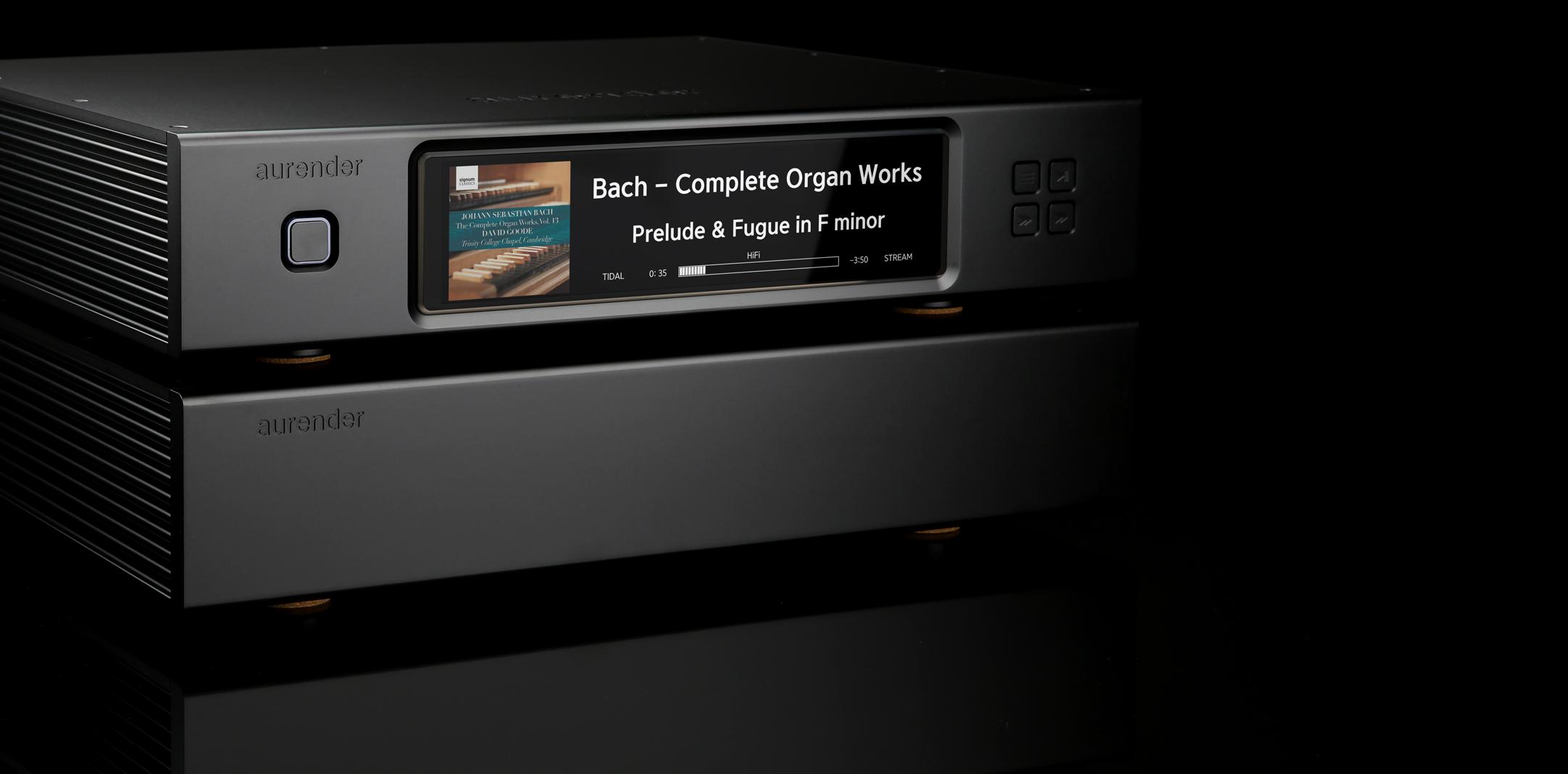
 By K. E. Heartsong
By K. E. Heartsong

Iremember clearly the debut of the Aurender W20 as introduced by the Korean Audio firm. It was Aurender’s very first streaming component. It was state-of-theart, robust, well-thought-out, aesthetically clean, and musically sublime. And its interface, powerful and intuitive, suffered no competitors. It was without doubt the streamer to beat and would remain so for years to come.

And when one takes into account the fact that the W20 represented Aurender’s first time out, in fact, its very first product, it was a grand slam in every sense. I was not able to bring the W20 in to the Heartsong audio fold, though I poured over its every detail, its every review, accolade, and praise, confident that one day it would sit high upon my audio rack. Though some things, in the short-term, are not always meant to be.
Eight years later, the Aurender W20, still at the forefront of the state-of-the-art, still prodigiously musical, still sporting ‘the’ interface, bar none, added the nomenclature Special Edition or SE. The ‘SE’ representing the distillation of continuous research and development, continuous technological improvements, and a ‘music first’ approach to rendering song, track, movement, etc. with superior fidelity, its trademark.
Into the Aurender W20SE’s place now steps a new component from Aurender—the Aurender N30SA. The N30SA transcends its prodigious brethren in a great many ways. It too is beautifully executed, its aesthetic clean, precise, its attention to detail stellar, and its
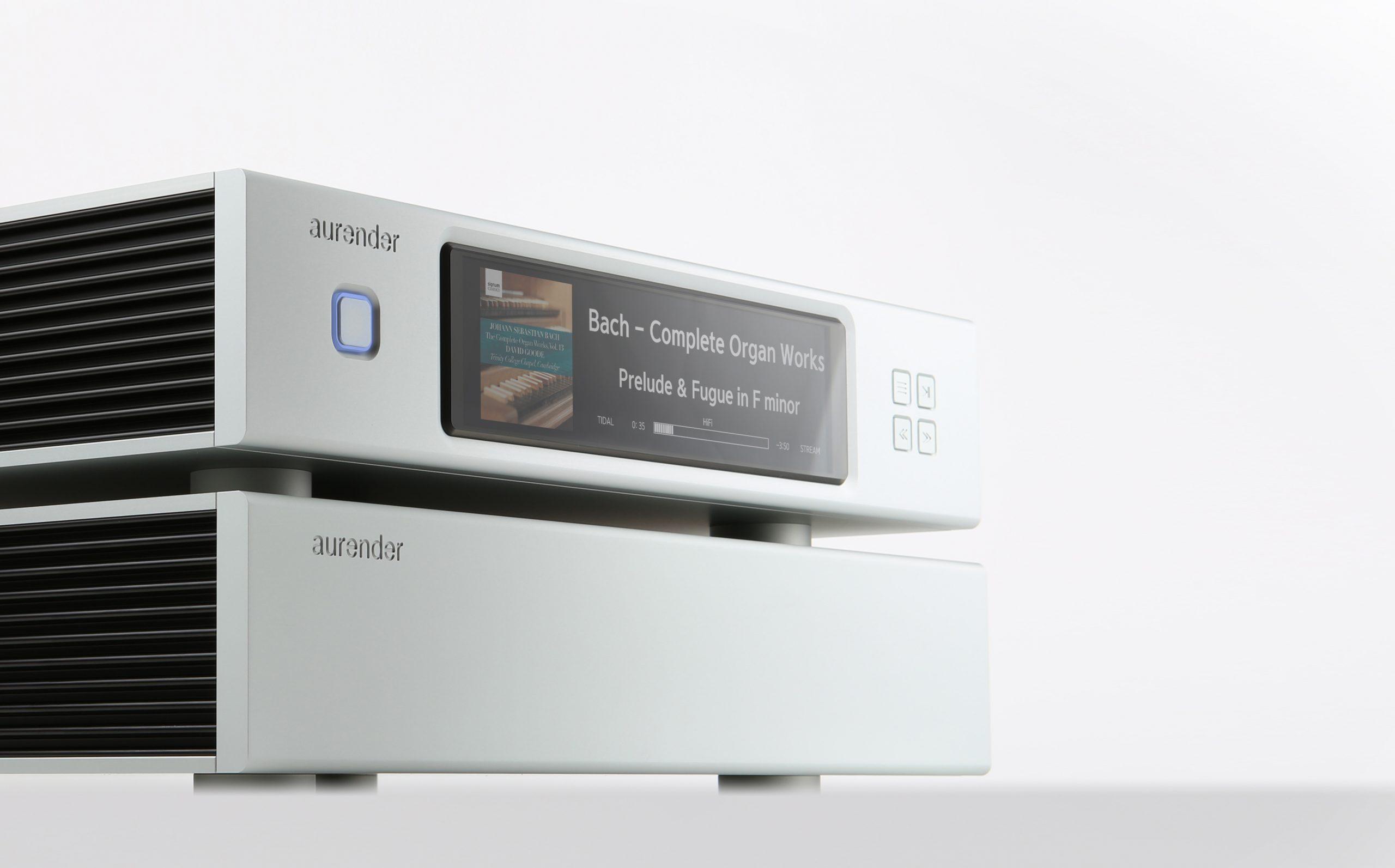
8TB SSD Storage + Expansion Port, an impressive 8.8" Front Panel Display, with its award winning Conductor App, and “an ultra precise OCXO clock to minimize jitter and its harmful artifacts.”
Stay tuned for the full review of the Aurender N30SA Digital Transport.
AKRM

 Tamara De Lempicka -Vase with Flowers
Tamara De Lempicka -Vase with Flowers




 By Andre Marc
By Andre Marc

Acelec is a new brand of loudspeaker brought to you from the Netherlands by the folks who founded Sonnet Digital Audio, whose DAC and streamer we recently reviewed. (Review link: https://www.audiokeyreviews.com/thereviews/sonnet-morpheus-and-hermes) We found the Morpheus and Hermes combo to be top tier performers. The clever minds at Sonnet designing the Acelec Model One monitor to be a world class speaker with no compromise. They also produce a pro audio version for use in studios.
Acelec put a tremendous amount of time and research in creating a very balanced presentation. They focused particularly on the cabinet, opting for an incredibly inert enclosure made of bituminized aluminum with internal damping. They were determined to avoid any ringing or cabinet noise. The design includes a ribbon tweeter and six inch driver, with a rear port. Bass extends down to 45 Hz, and it is smooth, clean, and precise in the treble.
The speaker is easy to drive, at 8 Ohms, and is capable of high SPL’s with no distortion. The build is quite impressive, with each speaker weighing in at 37 pounds! The speakers can be ordered in white or black, and are quite attractive in appearance. The attention to detail is very obvious.


Early impressions are wonderfully transparent presentation that is smooth, musical, with excellent depth.
The Model One does not favor any particular type of music, it simple delivers the goods with little or no editorializing. They work well with virtually any amplifier, tube, solid state, or Class D. Full review forthcoming.
COMPANY
(Sonnet Digital Audio BV) www.acelec.nl/index.html
ART CABLE
Rob Fritz, Audio Art Cable






 By K.E. Heartsong
By K.E. Heartsong
As I have mentioned in numerous reviews now, the Electrostatic World, that I travel to quite often, is filled with a great many wonders that can bring one’s music to life, while fulfilling expectations you may not have thought possible. In this world, those expectations are, indeed, possible. Across this world exist electrostatic speakers, headphones, headphone amplifiers, often called energizers, and even In Ear Monitors (IEMs). I have experienced them all to date, though my favorites are electrostatics of the headphone and headphone amplifier variety. Electrostatic speakers while quite good are often dependent on a greater number of variables to sound their best. And electrostatic IEMs, in my opinion, are not quite there yet or ready for the ‘Prime Time’. I’ve not heard an IEM implementation that was, well, listenable or listenable for extended periods of time. I’ll leave it there.

The Warwick Audio line of electrostatic headphones and headphone amplifiers approach things from a rather different perspective—a closed system perspective. In other words its electrostatic headphones and headphone amplifiers will only ‘play’ with each other. No outside electrostatic headphones and headphone amplifiers need apply as the interfaces are unique and exclusive. This approach may well appeal to a good many new and established electrostatic headphone-philes (lovers), who simply seek to


settle in and listen to their music free from the merry-go-round of upgrades. In this way, they’re listening still to electrostatics and the experience, whether closed system or not will be quite compelling. And, indeed, there are upgrades—the Sonoma Model One, Bravura System, Aperio System, etc.—within the Warwick Audio line itself and new products, no doubt, on the horizon.
One headphone amplifier. It is a clean, compact, portable electrostatic solution that incorporates its own internal DAC, which defeats the need for purchasing a DAC, which further establishes a cost-efficient baseline. Stay tuned for the full review of the Warwick Audio Bravura System.
AKRM

 Edward Hopper — Cobb’s Barn and Distant Houses
Edward Hopper — Cobb’s Barn and Distant Houses



 By K.E. Heartsong
By K.E. Heartsong
Silent Angel’s domain of expertise ranges from Network Switches to Music Streamers/Transporters to Linear Power Supplies to Music Servers to a host of accessories. It is a wall-end to DAC-end path facilitated to make everything work together flawlessly in service of the signal—the music. What could be more important?

In a way, the Silent Angel Music Server—the Rhein Z1— represent the next level Mac Mini, that is made capable, through dedicated linear power supplies, DC cables, network switches, that together exact every last iota of detail, quiet, and musicality. I’ll answer the how and why of this in its coming review. Though simply, stated, when one protects the integrity of the signal from the wall-end with the Bonn N8 Pro via its gold-plated RJ45 ports, its Temperature CompensationCrystal Oscillator (TCXO) Clock Module, with the express purpose of reducing any and all signal interference. The result is greatly reduced jitter,
efficient transmission, and better overall sound. And when a Silent Angel Forester F2 Linear Power Supply is added to the Bonn N8 Pro can a Mac Mini jacked straight to the wall compete? I will, of course, answers this question among others in the Bonn N8 Pro’s coming review.

When one ads Silent Angels’s ROON Ready Rhein Z1 Music Server with hookups for TIDAL, Spotify Connect, Apple Airplay, DLNA, its very own Forester F2 Linear Power Supply hookup, and when that pristine signal enters coming from the Bonn N8 Pro, what do you think happens then?

Yes, this series of reviews is going to be a lot of fun and, I imagine, very informative for those still wed to the Mac Mini or lessor severs and their various limitations. Silent Angel’s dedicated stand against all such limitations in the service of the signal from wall-end to DACend may well be a revelation for all concerned.
AKRM



Welcome to AudioKeyREVIEWS Magazine’s Recommended Components, which will become part and parcel of each of our various issues. The purpose of this section is to acquaint the reader with products—speakers, DACs, amplifiers, preamplifiers, turntables, headphones, IEMs, streamers, portable audio, etc. —that we feel are quite exceptional and rise above their like brethren. There will be three categories—Budget, Mid-Tier, and Top-Of-The-Line. In our Budget Recommendations there will be products that compete far above their respective price point and are, generally, also built to reflect this.Our Mid-Tier Recommendations will encompass those products within arms reach, in terms of relative affordability, that present value and a challenge to the vanguard of their respective product niches. Finally, our TOTL Recommendations will be composed of those products that are at the cutting edge of technological advancement now happening across the world. The three categories of recommendations will rotate across the various issues of our magazine and there will also be a fluidity to the products within the various lists. Things change and especially now given our current technological epoch. The various lists, however, will be fixed on the AudioKeyReviews.com website.








COMPONENTS RECOMMENDED UP TO $1500

1. ASTELL&KERN SE180 $1499: A DAP that travels and that does not leave one yearning for one’s home-based desktop or even one’s HiFi system! I would have thought the SE180 the TOTL DAP when judged by its abilities, but it’s not.

2. BURSON AUDIO CONDUCTOR 3XP $1399: The Burson Audio Conductor 3XP delivers a transparent, natural, and highly engaging, musical experience, well beyond its price point. The Burson Conductor 3XP is highly recommended!


3. STAX SRM-500T $1340: For those new to electrostatics the SRM-500T may serve as a beacon to a world that is immensely charming, musical, and communicates as if a breath of fresh air. It’s a great starting point.

4. ZMF ATTICUS $1099: Absolutely gorgeous in aesthetic, prodigiously musical, mesmerizingly transparent, offering an immensity of soundstage second to very, very few. And then there is its beguiling camphor wood aroma…

5. TRI-ART P-SERIES $995: It is a component made by a music lover and artist and, in truth, a visionary, who sought to provide more for the Everyman/Woman, whose hard-earned dollars deserved more…

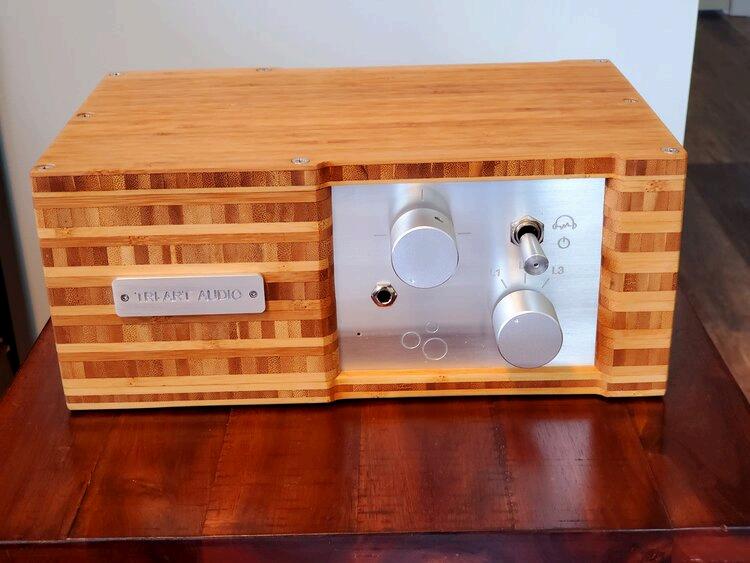








 Henri Matisse - Blue Room
Henri Matisse - Blue Room
COMPONENTS RECOMMENDED UP TO $1500 (CONT’D)


6. SCHITT FREYA for $899: The Schiit Freya+ gets our highest recommendation. For $899 you get a triple mode line stage, with a 128 stepped attenuator, rarely used but beautiful sounding 6SN7 tubes and a nice metal remote control.

7. FIIO FD5 IEM $299: The FiiO FD5 from a design, aesthetic, build, and operational perspective is, indeed, a flagship product. It also provides a wealth of accessories that few flagships have, to date, matched.
8. iBASSO AM05 $299: The AM05 is very well made, aesthetically quite beautiful, and provides for one of the most easy to place and most comfortable fits for an IEMs that we have ever reviewed.


9. AudioQuest DragonFly Cobalt $299: Music via the DragonFly Cobalt will very much engage heart and mind and soul, above that of both its brethren, with a rich, natural, and transparent musicality that is highly addictive.

10. Clarus Audio CODA $299: The Clarus CODA is much more than anticipated, For the price, its decoding Strengths, its musicality, solid build, the CODA has few if any competition at its price point., very highly recommended!


 Vincent van Gogh - Sunflower, 1887
Vincent van Gogh - Sunflower, 1887

For us a Magical Synergy represents two components or more, that together make music far above what either make separately. Generally, we’ve discovered Magical Synergies via reviews, where we mix and match a good number of components to determine how one of the components—the component under review—sounds.

And while there may be strengths and weaknesses between the various combinations, the Magical Synergy represents that combination which has very few if any weaknesses and a wealth of combined strengths.
In this respect, we’ve done the homework for the reader by evaluating numerous combinations to uncover the Magical Synergy, as many of you may not have the time, options, or financial wherewithal to make these determinations. And Magical Synergies are not always uncovered in our reviews and or our research, as they tend to be, well, rare.

A note on the various Magical Synergies that we uncover. We are music lovers first and
foremost and not professionals who produce music or movies for a living and require different synergies, nor do measurements come into determination for us of what is a good Magical Synergy and what is not. No, for this we determine by ear, heart, and soul, that which moves us, provides for that “vibrational” comfort food, and a rich and engaging musical experience. The experience should, of course, come with sufficient detail and resolution and fidelity to recreate venue and/or the experience of listening to live music, when appropriate. After a long and trying day in this topsy-turvy world, wouldn’t it be wonderful if some small measure of nirvana could be achieved through one’s music and the components that play it back?
In other words, our Magical Synergies do not render music that is dry, unengaging, subtractively neutral (see dry, boring, etc.), flat, or lacking in dynamics, when called for. Please find for your review a number of Magical Synergies below.


$6k


ZMF ATRIUM & AURORASOUND HEADA HPA


The Atrium’s abilities are without question, and to date it is without a like competitor that can so successfully and easily bridge the three technologies/worlds. In this respect, the Atrium stands alone. A salute must be given to Zach, Bevin, and ZMF. If you are first and foremost a music lover the Atrium will not fail to draw you in via its numerous talents. It is a little as though you were sitting on the event horizon of a Black Hole, another situation impossible to escape being drawn into. Salute!
The Aurorasound HEADA headphone amplifier is musical from ‘Square One,’ ‘Jump Street,’ ‘Scratch’ or, practically, as soon as you turn it on, though it gets worlds better, thereafter. It is a beautifully, carefully designed, endgame component to pass down. Or perhaps to take to the other side. Solid state dynamics, resolution, detail retrieval, spaciousness married to tube liquidity, with remarkable tone/ timbre/texture, offer #%$*@!musical bliss. What more could one ask for? $2,999.
The combination of these two components give musical a new and altogether more immersive meaning, while bringing transparency, resolution, and detail retrieval together in a most unparalleled way.
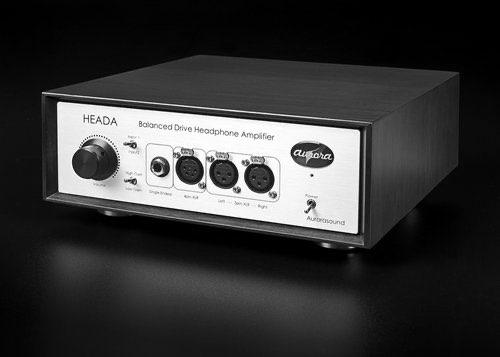

The STAX SR-009S may represent, for many, a transcendent listening experience. It may move you beyond expectation to that which you never imagined possible in a earspeaker or headphone. And should its stable of playmates be able—of good musical repute and like ability and up to task— then you will find yourself in another world of music, altogether and, like me, traveling across time and space, from venue to venue, experiencing sublime enjoyment. This is the magic of the STAX SR-009S …


The Trilogy H1 energizer is the child of electrostatics and single-ended triodes and it is sublime in the extreme. In many ways the H1 moves beyond even its top competitors, as the synergy of its ‘talents’ enable the transcendence of its like priced competitors and draws it to near parity with those peers priced far above. Did I mention the Trilogy H1’s blazing, transient speed, its outstanding transparency, its hypnotic immersiveness and delicious tonality? Yes. Well, okay.

These two components represent the very cutting edge of audio components that check all the required boxes for performance and sublime musicality. You may like I did, rise to change the record, but there is no record. A truly compelling Magical Synergy.




There is, perhaps, no aspect at which the Grimm Audio MU1 does not excel across its functionalities and collective voices— both “better” and “best”. It is supremely transparent, easily able to resolve the most dense passages, movements and songs, and it lifts prodigious amounts of detail, most especially via its AES/EBU (4x) output. It is also natural and richly musical in a way that makes it compelling and immersive and fluid as if an analog rendering. A time and space machine, indeed, for the when and where the Mola Mola Tambaqui transports one. Impossible it is, to write the concluding notes of this review, to break away from the spellbinding music or magic that this DAC/Headphone amplifier creates. Max Richter’s The Blue Notebook plays and the music sweeps over me as though my yellow-chair-tardis finds its way, through time and space, to this venue and that… The Mola Mola Tambaqui is an incredibly musical time and space machine, that some might even consider otherworldly. It is as if these two components were, well, Made For Each Other (MFEO) so brilliant is their pairing in USB mode, but when paired via a balanced digital output (XLR) sublime only begins to tell the story. A Magical Synergy at the tip top of that classification. Bravo!



 Henri Matisse - Drawing with Scissors
Henri Matisse - Drawing with Scissors












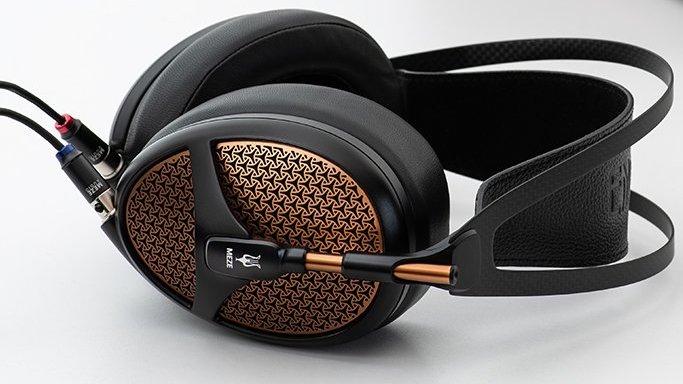


 MEZE EMPYREAN
SPENDOR A2
MEZE EMPYREAN
SPENDOR A2


 BLUE HAWAII SE
ALTA AUDIO ALYSSA
BLUE HAWAII SE
ALTA AUDIO ALYSSA


